21 proven tools for your 2025 marketing tech stack [Recommended by market experts]
![21 proven tools for your 2025 marketing tech stack [Recommended by market experts]](https://www.dashly.io/blog/wp-content/uploads/2022/08/martech-stack-999-1440x634.png)
This is an updated version of this article originally published in 2023.
Alice in Wonderland. Amazed and lost. That’s how a typical marketer from 2011 would feel facing today’s variety of tech.
No surprise! If it was 150 martech companies fighting for your marketing team’s attention back then, today its number has grown to over 9 000. Impressive, heh?
Thus, it is easy to get lost when choosing a winning combination of tech stack tools that would correspond with your:
- goals;
- current tools;
- сompany growth;
- budget.
Just imagine how much time this project will take. Not to mention the stack integration part.
Good for you, here is a list of 21 marketing technology stack tools well-tested by 20 fast-growing companies like Heap, AirCall, Dashly, HubSpot, Intercom, etc.
What is a martech stack?
Marketing technology (martech) stack is the suite of technology (tools) used to streamline and speed up marketing processes along each step of the customer journey: generate leads, personalize communication, analyze the campaigns’ results.
Here is an example of the Dashly marketing technology stack diagram:
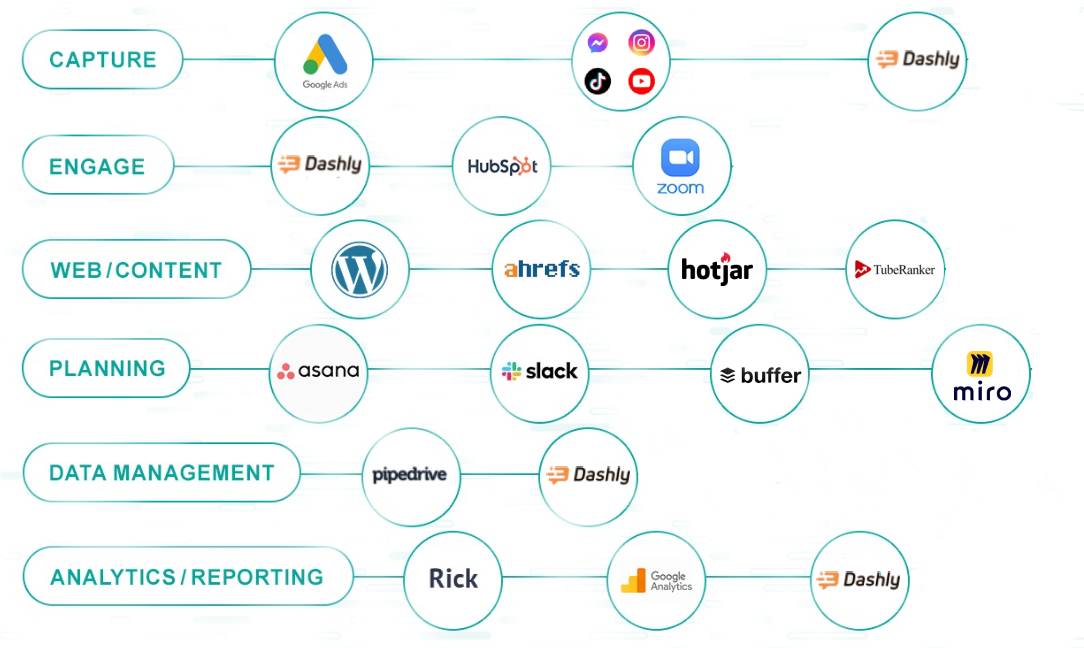
You can see that the tech stack is separated into groups according to the tasks. Sure thing, there are repetitive names like Dashly because our marketers tends to use all-in-one multichannel tools like the majority of SaaS businesses today.
9 martech stack trends and guiding principles of 2025
First, it’s about money. CMOs spent roughly 26.6% of their annual budgets on marketing tech.
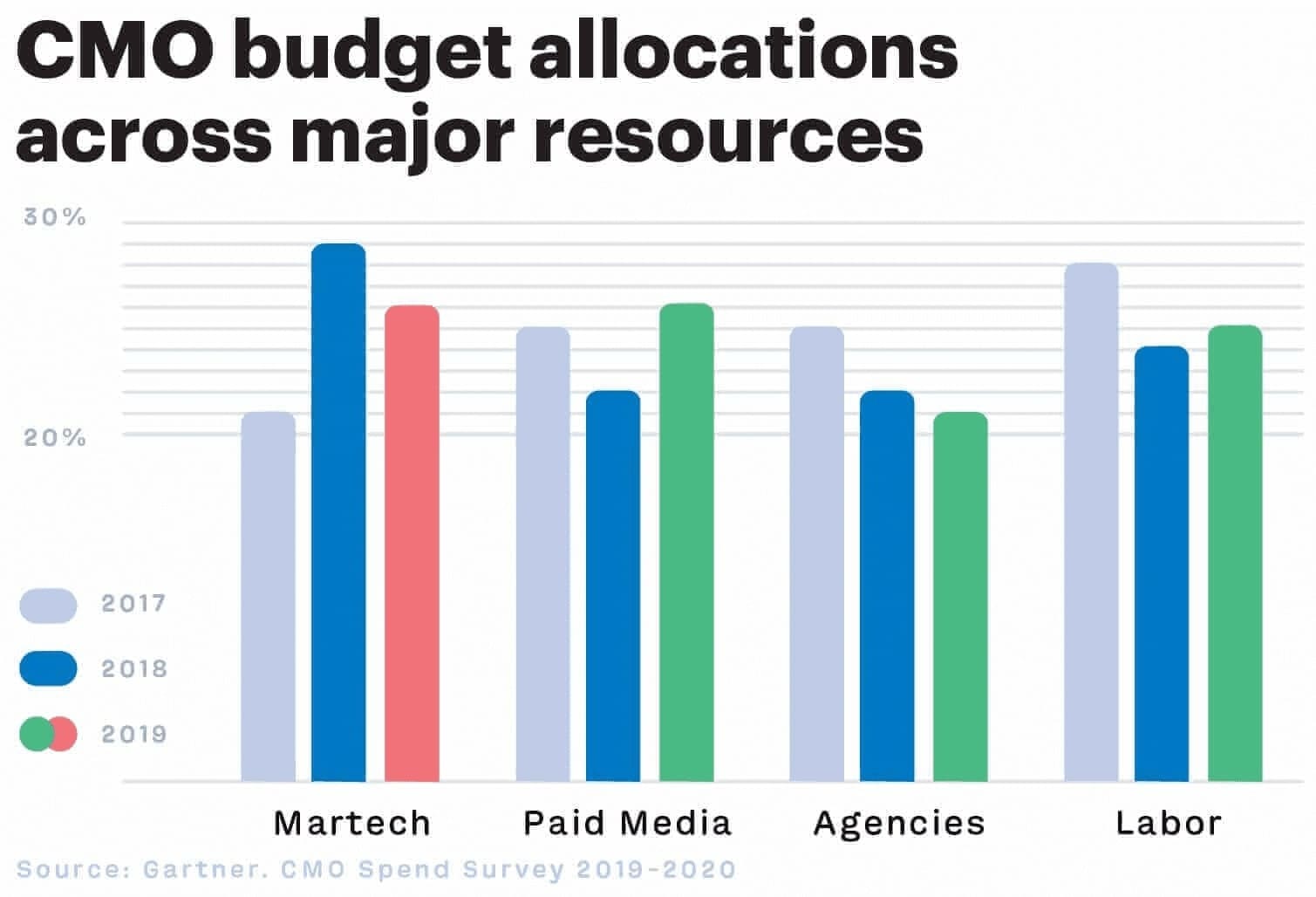
The budgets have climbed to 9.5% of total company revenue in 2022, an increase from post-COVID 6.4% in 2021. Gartner’s survey also found that 68% of CMOs expected their spending on Martech to increase during 2022.
So, the priority is clear. But how to navigate the software landscape?
We’re picking new tools for our stack much quicker than we deploy them.
If you’re like me, willing to test every new relevant tool, that’s a problem. Field leaders reported utilizing only 58% of their martech stack’s potential.
That was a signal to rethink and optimize martech choice. And they did. Technology stack 2022 focus shifted to building smart tech stacks. That means:
All-in-one tools
Marketers move to CRM and conversational platforms instead of using different technologies for different tasks. Thus, business eliminates the need for disparate point solutions and streamlines the workflow of sales, support, and marketing with a single solution.
Integration with everything
It’s ok that your marketers use different tools. The problem comes when you need to play them together. Like CRM, messengers, social media, email, and live chat on a website in terms of communication with customers.
Now, marketers opt for API-first solutions that provide a free-flowing exchange of data between tools and systems.
Saving time with marketing automation
Time is money. So marketers tend to automate everything that can be automated, for example, follow-up email marketing campaigns. This makes automation platforms like Dashly or Drift such a popular solution nowadays. They help with routine tasks like the personalization of communications with website users.
Marketing tools that collect visitors’ data without cookies tech
Business is moving to a cookieless future. That means marketers should be ready to understand the customer and their journey with martech tools that can collect visitors’ data without cookies technology.
Thus, marketers tend to collect data from third-party sources and use customer data platforms with tools like chatbots, pop-ups, newsletters, polls, and surveys to engage visitors to share their data.
Increasing interest in video content and marketing video tech
You’re not the only one who is in love with TikTok or lost an hour due to Instagram’s reels syndrome this morning 🙂 But we call that “market research”.
Video is the top media format. 6 in 10 marketers claim to be using video in content marketing. Marketers are looking for decisions with integrated video editing tech. But they also use marketing tools that are created for video editing only.
“No Code” tech
The essence of the marketing technology trend: software that empowers general business users to create things that previously only specialists could produce. For example, thanks to visual builders, non-tech marketing managers are able to create chatbots, pop-ups, and social media integrations. Previously, you had to be a developer programming with code to build any of these.
Reaching global audiences
With 65% of marketers currently working internationally, it’s important for the business to have an international strategy. International specialists determined the three biggest challenges: cultural differences, exchange rates, and technology localization.
User’s privacy
77% of respondents strongly or somewhat agreed with the statement: “I worry about how companies use my personal information online.”
The days of buying email lists have moved from standard practice to illegal activity or strictly outlier behavior thanks to country-specific laws. For example, CAN-SPAM Act in the U.S. or European Union’s General Data Protection Regulation.
For marketing technology stack it means three things:
- Getting users’ details is becoming more difficult for marketing specialists.
- Customers expect a guarantee from service about their privacy.
- More and more specialists abandon the idea of requiring bank card details from users, who sign up to a trial period.
Growth of consumer demand for more personalization
76% of consumers get frustrated when they don’t find personalization. Marketing specialists are forced to keep a balance between good CX and fair, voluntary, and conscious data collection for users.
This means increasing attention to the triggered emails and AI tech.
All this made the best-of-suite marketing technology solutions the next step optimization. Now, when the martech trends are clear, we move to the practice step.
How to build the ultimate marketing technology stack
A one-size-fits-all tool stack is a beautiful fantasy we dream about before going to sleep. But a morning sobers us with real business problems that demand personalized solutions.
Anyway, there are basic tools you need to build your stack from the scratch. They are common to every business.
Let’s take a typical company example. Suppose, you’re working for a mid-size B2B SaaS company that has about
1000
employees
200K
traffic
$300 average check
Building a marketing technology stack is about hiring a tool to do some tasks. As well as hiring a professional here, you don’t choose it for a rich experience. You hire a tool to do certain job.
So, here are common challenges that stand before marketing managers in any type of business:
– attract traffic to a website;
– answer user requests from different platforms in one inbox;
– engage customers in a conversation on a website;
– retain users who are going to leave it;
– collect potential users’ contacts;
– get information about their interests in a product;
– transfer leads info to the sales department automatically;
– analyze and optimize campaign performance.
To achieve them in terms of the above-mentioned company, there are 15 experts working on SEO, SMM, messenger, affiliate, marketing, YouTube, PPC, triggered messages on a website, emails, etc. Each of the strategies requires its specific stack.
If you don’t control the process of hiring new tools, it can turn into very expensive chaos.
So, the first question you should ask yourself is what goal you want to hint at. Here is a short plan on how to navigate the tool stack landscape:
- Assess current market challenges. If you don’t know which problem you want to solve, any tool is useless. So first, you need to talk with your marketing. Ask them what prevents them from reaching their goal: usual issues and pain points.
- Build a short-term strategy based on your customer journey. Set up the goals and identify the type of tool to achieve each of them. Here is a sample of a table to help you:
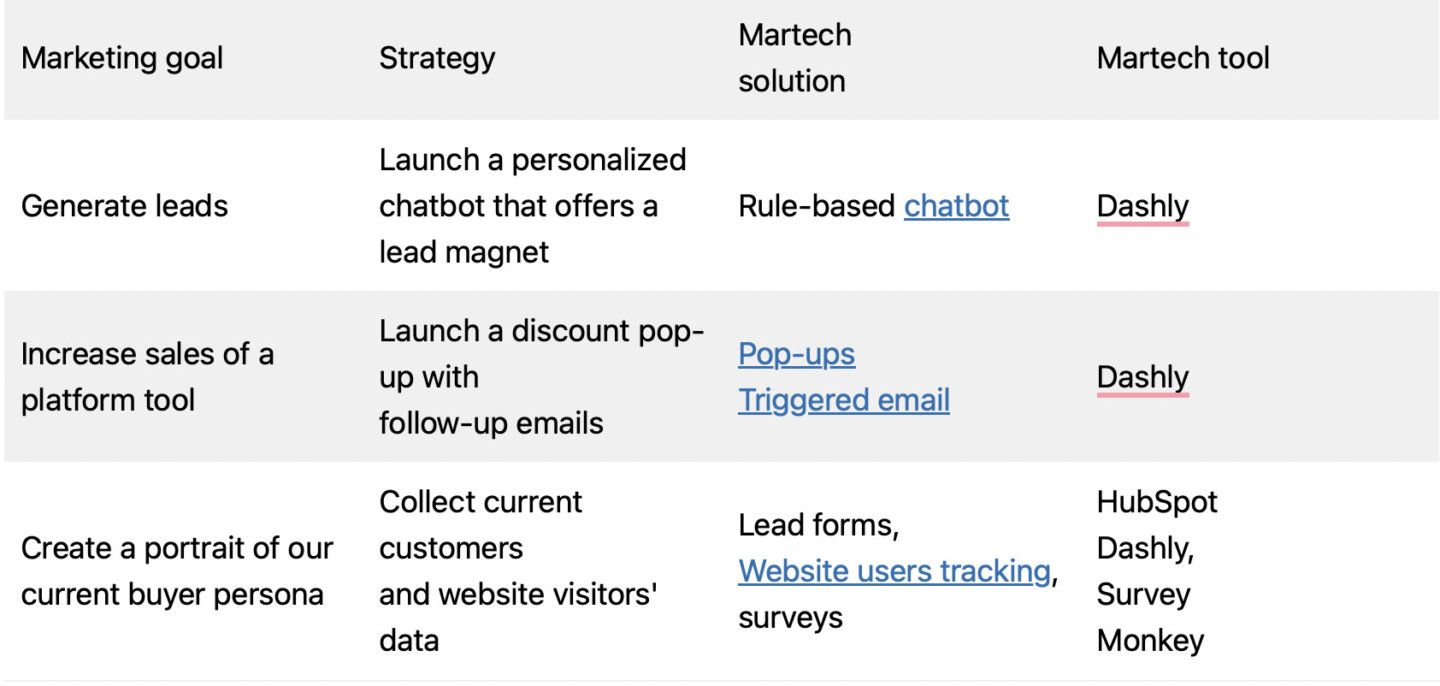
- Mind the processes you want to streamline.
- Audit your current marketing technology stack. Every quarter or twice a year check how tools work, which are essential and irrelevant.
- Define whether your employees are ready to master new tools or not. Do you need to hire new specialists or improve their skills?
- Establish budget. Not having to pay for tools can be insufficient, and your budget is not bottomless. Therefore, you should choose the essential martech tools to benefit you. It helps understand the monthly, quarterly, or yearly martech budget.
Thanks! Now check your inbox

After that, you’ll have a clear vision what essential technologies to select for a digital marketing stack.
This leads us to the next step — the list of nice-to-have marketing technology stack tools every company uses. I’ll group them according to the classic phases of a marketing campaign.
8 martech tools to attract leads to your website
Leads are the holy grail of every marketing specialist. You don’t even have to start a crusade to get them. Just decide who (what tool) will do it for you. After deep research of the leading CMOs’ tech stacks, I’ve come to a list of marketing technology software to get and manage information of potential customers for B2B and B2C.
Start with the basics.
Generating leads means website traffic. And that’s nothing like Google. Google Ads to be exact.
Google Ads for targeted ads
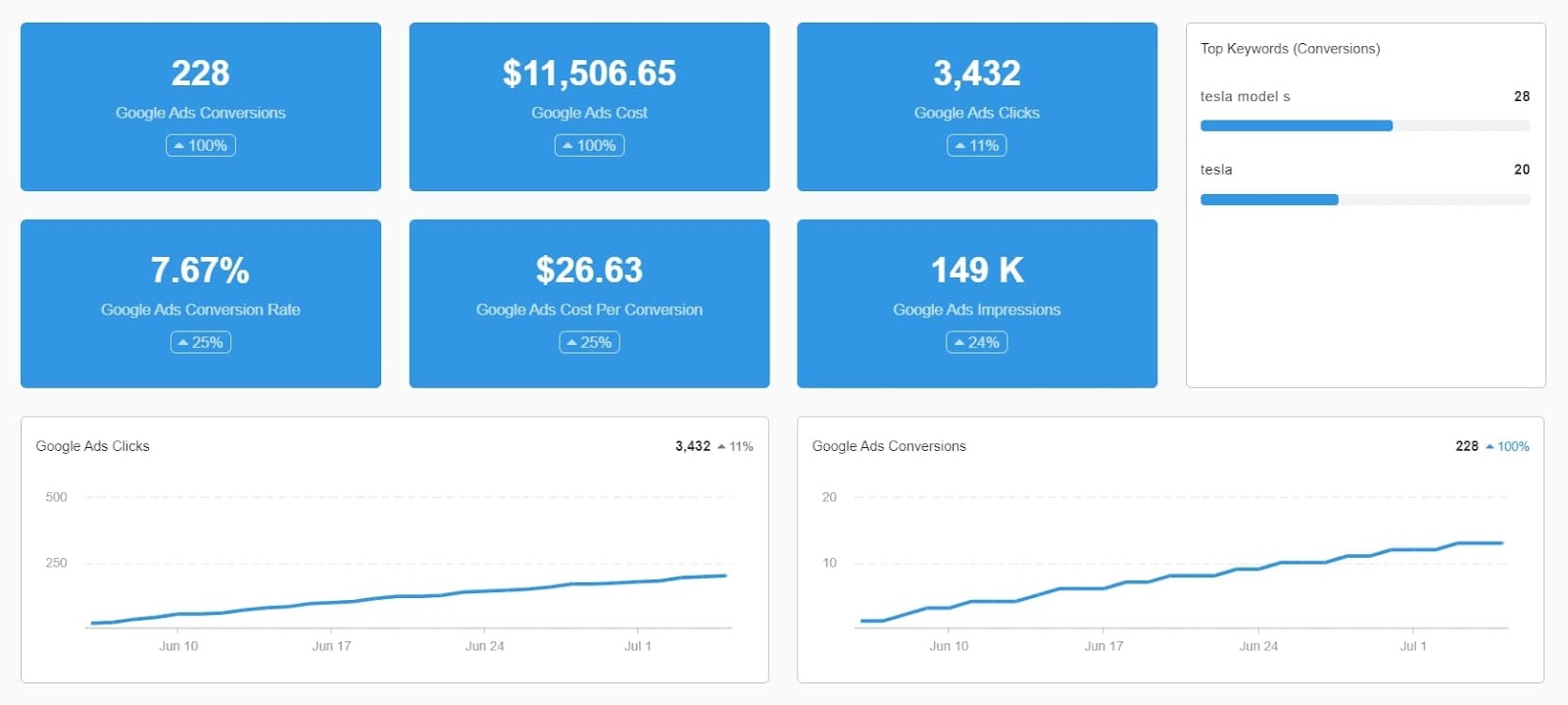
Wanna fast traffic? Launch ads. That’s a way to target your audience with keywords with a selling intent.
Why it’s useful: This is an excellent element of the marketing technology stack for growing a mailing list, remarketing, and testing hypotheses. Monitor the performance of your campaigns in real-time. Tested through the years, this tech is perfect for any business.
Price: free
Alternatives: Quantcast, Demandbase, Engagio, AdRoll, Terminus.
Website and landing pages constructor Unbounce
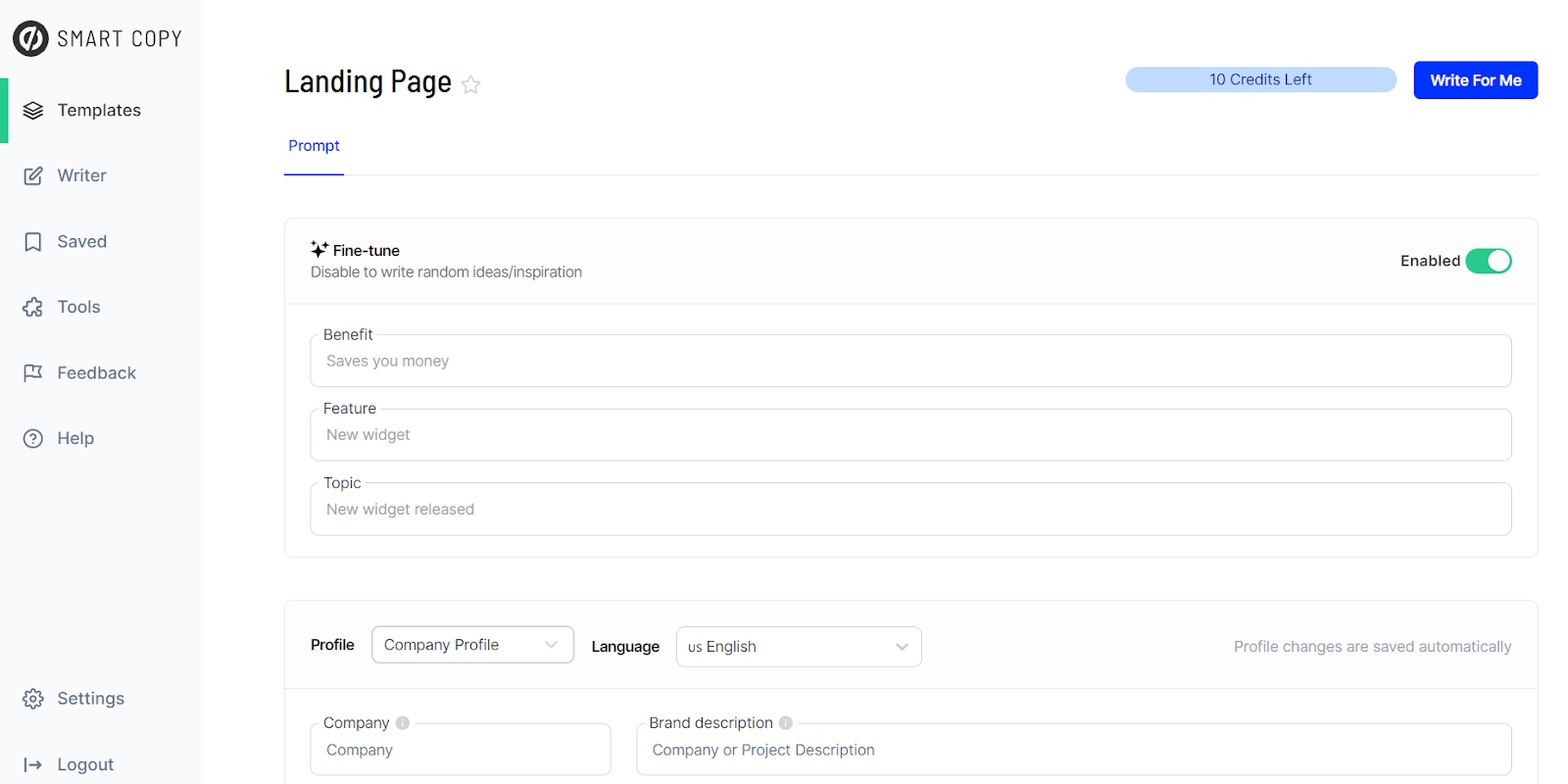
Ads work well only when they lead to a top-notch page on the website. As the continuation of the ad’s message, it converts prospects into leads. In a perfect world, there is a landing page for each buyer persona you have. But then you realize that it’s designers’, copywriters’, developers’, and your time should be spent. Too many resources? Not anymore.
Why it’s useful
As a part of a martech stack, Unbounce offers a quick and easy builder of traditional and AMP landings without code. Choose a template or create one from scratch. It won’t take more than an hour. Publish and experiment with design and headers using robust A/B testing.
Price
$225 per month (10% OFF if you pay annually), 14 days trial.
Alternatives
Tilda, Instapage, Leadpages, GetResponse, Landingi, OptimizePress, SeedProd.
Content management software HubSpot
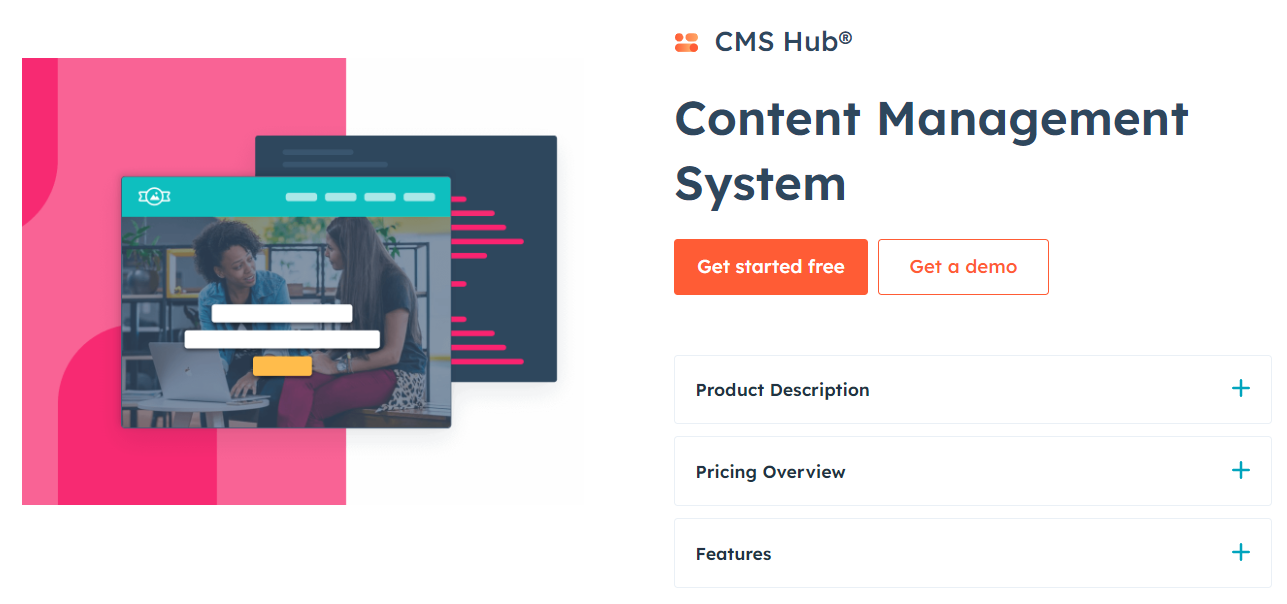
Content management software HubSpot is a flexible tool for the marketing department, powerful for developers, and makes customer experience personalized and secure.
Why it’s useful
Marketers can use contact attribution reporting, SEO recommendations, and website themes. Developers will enjoy extensive documentation an active community, and interactive elements. Each expert will appreciate 24/7 security monitoring of the site & threat detection, the opportunity to grant appropriate permissions, and tracking of what changes were made and by whom.
Price
$1200 for the Enterprise plan. It includes special tools for the management of a marketing department. Except for those functions mentioned above, there are site performance monitoring, single sign-on, code alerts for developers, and hierarchical teams on multiple levels based on department, region, business unit, brand, etc. Adaptive testing will be helpful for marketers.
Mid-size and enterprise companies usually choose the $360 or $1200 plan.
Alternatives
WordPress, Drupal, Ghost, Wix, Squarespace, Webflow, Shopify, Joomla, Drupal, Magento.
Ahrefs for SEO
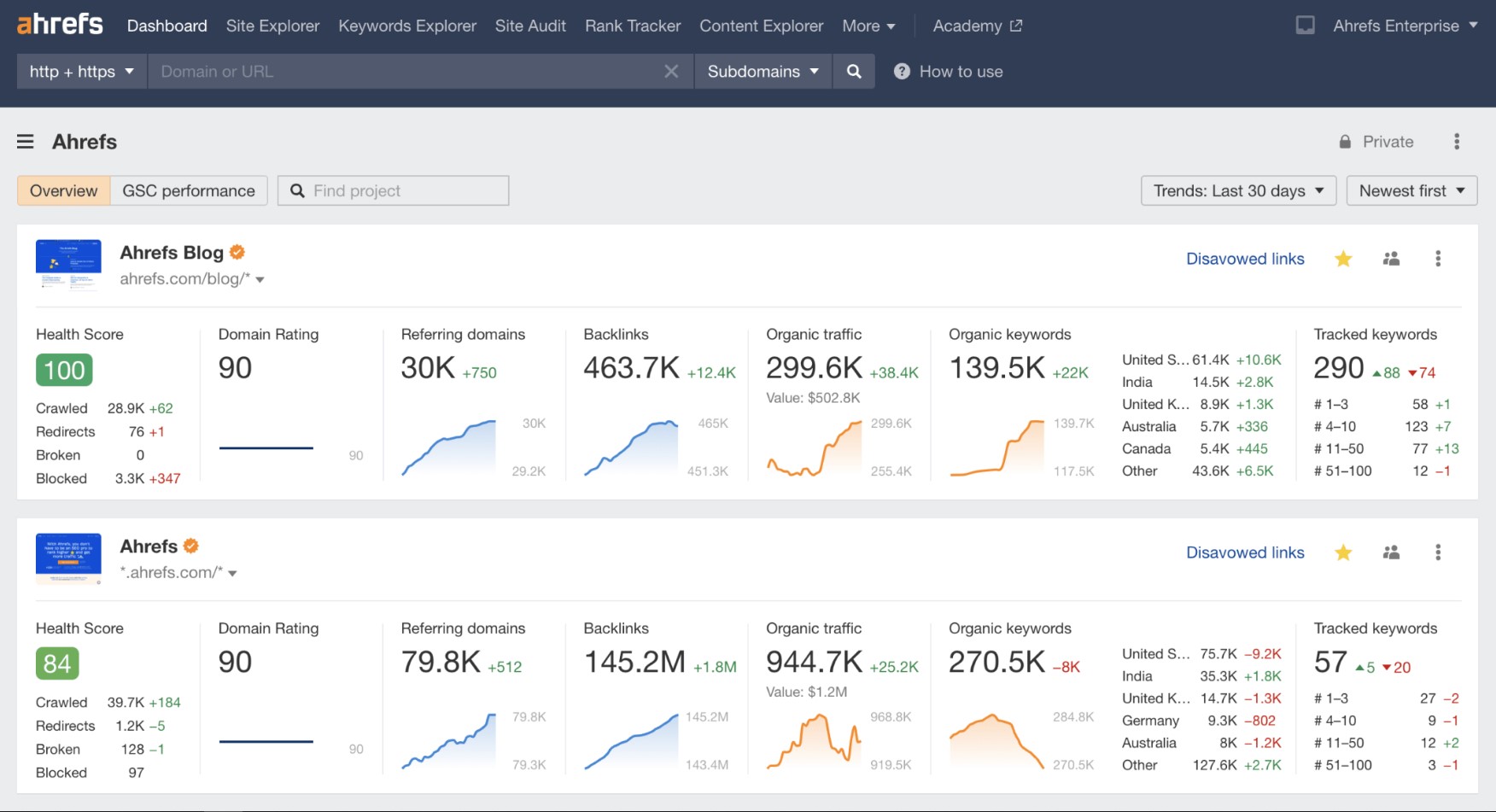
SEO service is a must-have part of every martech stack. Work with Google SERP to be among its first 10 results for your target keywords and get a TON of chargeless traffic, and the pricing is quite nice. That’s simple:
- analyze competitors;
- choose keywords;
- craft relevant content;
- distribute, promote, and build backlinks.
Why it’s useful
Ahrefs is one of the fav instruments SEO specialists use daily worldwide. It contains all the features needed for blogs, websites search traffic growth and niche research. Ahrefs will tell you what topic to rank for, what negative keywords to choose, how many links to build to be on top of the Google SERP, etc.
Price
€369 per month. If you pay annually and get two months as a gift. You can try limited access to Site Explorer & Site Audit for free.
Alternatives
Conductor, Semrush, Serpstat, Moz, Ubersuggest, BuzzSumo, SE Ranking, WebCEO.
TubeRanker for YouTube SEO
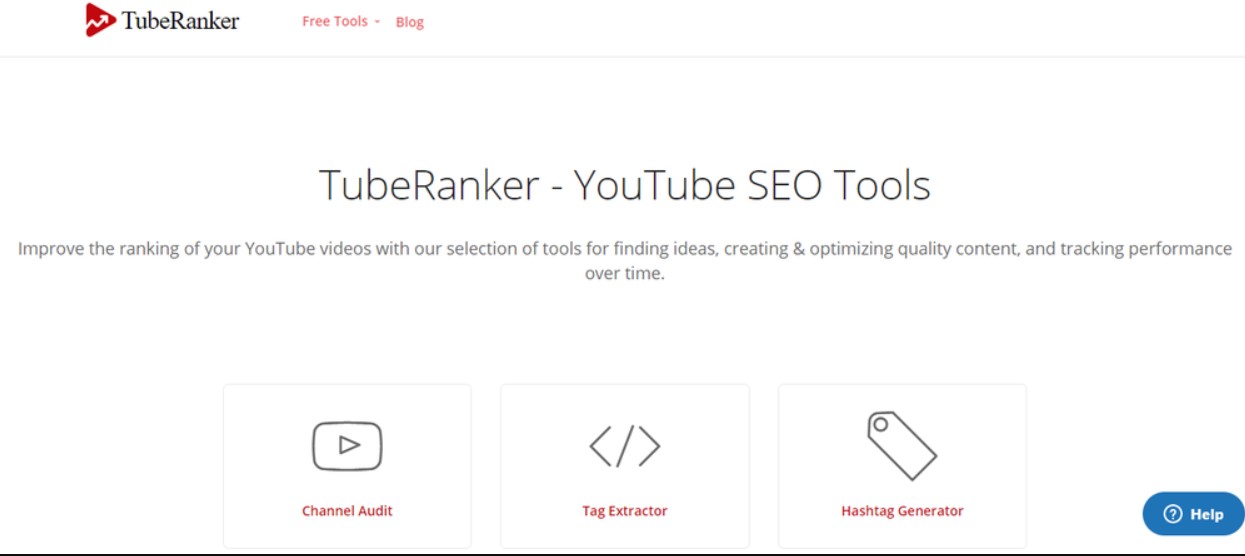
As we said, the future belongs to video content. TubeRanker helps to create the most prospective type of content for you, analyze competitors and drive more views and followers by ranking up on YouTube & Google.
That marketing technology has the next features:
- tag & hashtag generator;
- channel audit;
- keyword tool;
- rank tracker;
- tag extractor;
- title & description generator.
Price
$49 per month + applicable taxes. As part of the advanced plan, you will receive 100 tracked keywords and 250 keyword tool searches. 14 days trial is available.
Buzzsumo for content marketing insights
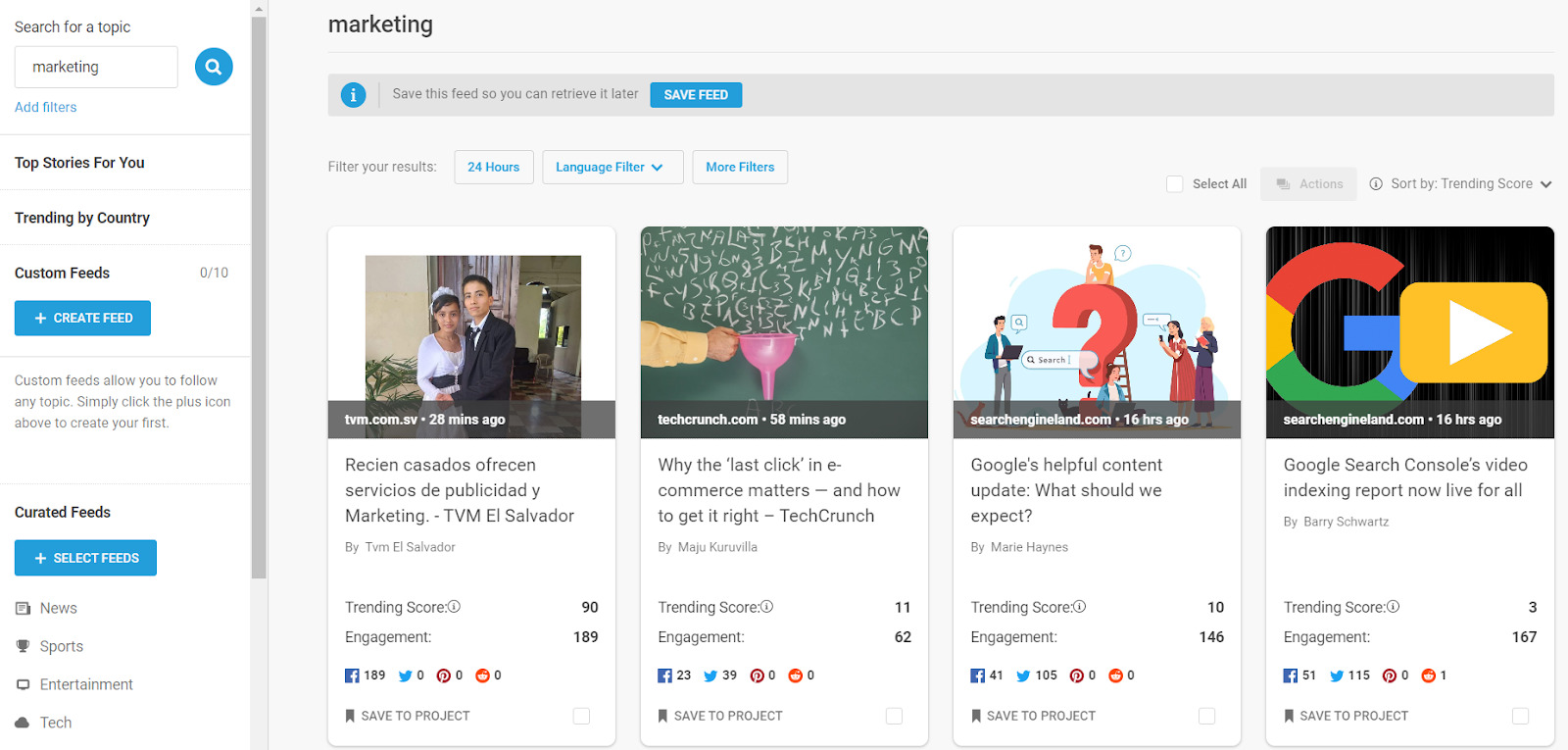
Why it’s useful
You can use it to do keyword research and explore the hottest content ideas for your audience based on the market analysis. In addition, it will show you competitors’ content and influencers to cooperate with. Monitoring will simplify the vanity search. In a creative crisis, a content ideas generator will revive your inspiration.
Price
$179 per month for small agencies and growing businesses. That plan includes ten employees seat, 150 exports/month CSV, Excel or PDF (content searches, content analysis, etc.,) and a key question analyzer.
If you pay annually, you get a 20% discount. A gratuitous plan and 30-day trial are available.
Sprout Social for SMM
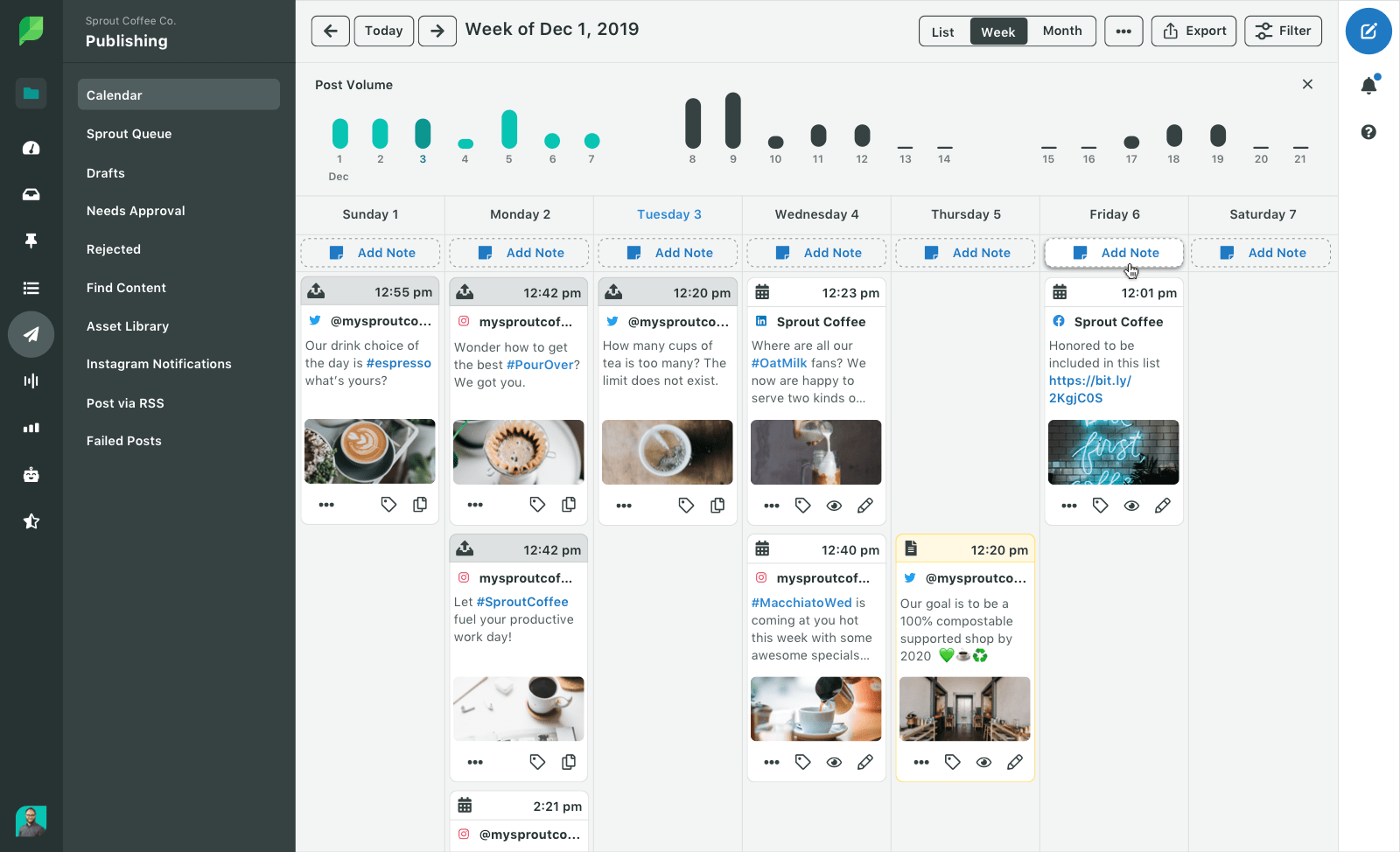
This tool allows you to manage your entire social media strategy from one place.
Why it’s useful: Manually posting on social media takes too much time. Create and schedule your publications on Facebook, Twitter, LinkedIn, Instagram, and Pinterest in one click. Moreover, Sprout Social gives you a vision of social media strategy.
- Analyze results
- Engage the target audience with bright content
- Streamline your publication workflow
- Localize publishing according to your followers’ time
- Brand building through employee advocacy
Chaos can bring you one-time marketing success, strategy is a key to steady social community growth.
Price: $299 per month, 30 days trial
Alternatives
Hootsuite, MeetEdgar, Sprinklr, Buffer.
Zoom for video webinars
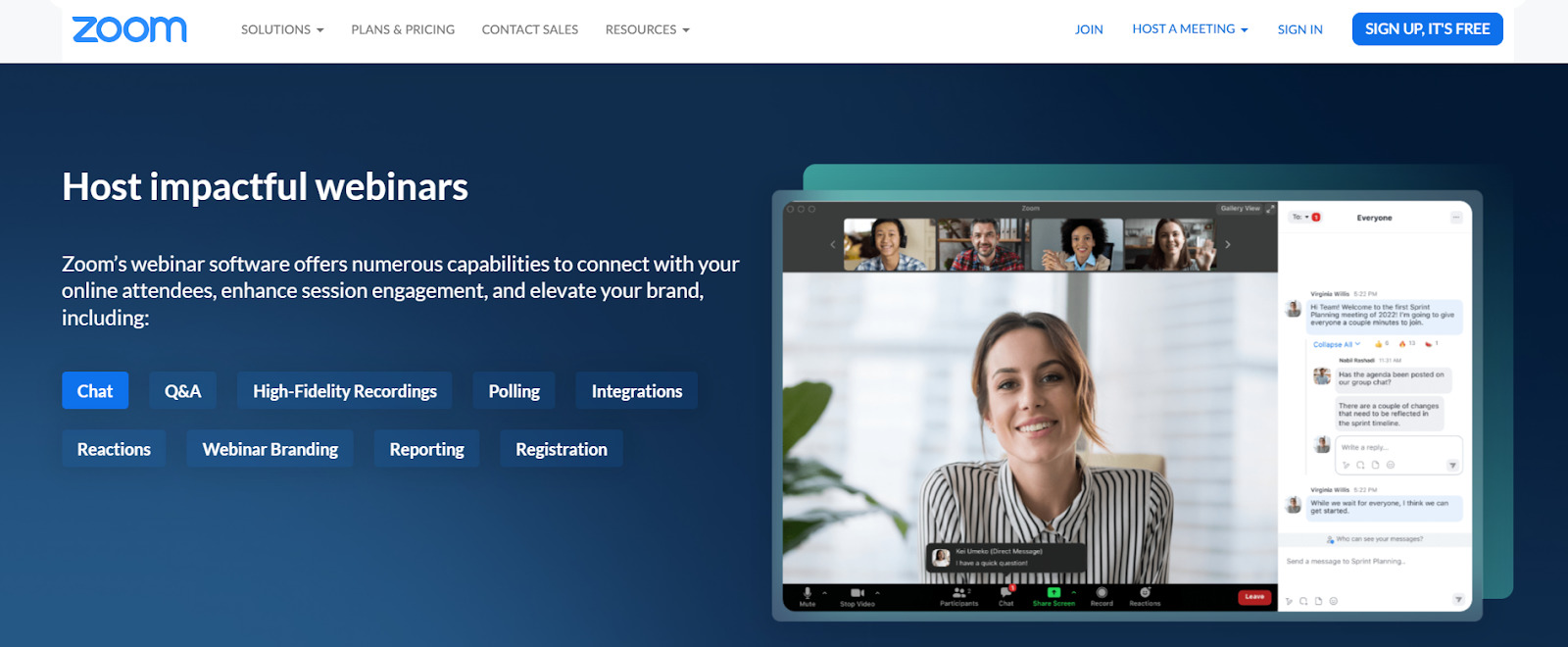
Everybody knows Zoom for meetings. But do you know, how it can be useful for your martech stack as well? Zoom is a great tool to attract attention to your product via webinars.
Why it’s useful
Product demos, meetings, and online conferences are only a few of the marketing fields Zoom is used for. But it’s perfect for lead generation via webinars:
- flexible registration management;
- high-quality connection;
- screen sharing;
- HD video quality;
- unlimited participants;
- CRM integration to store their data;
- analytics;
- privacy and security powered by AES 256-bit encryption.
Zoom has plans for both small webinars and huge ones. Zoom Events & Webinars allow you to invite thousands of guests.
Price: $340 per month
Bonus: Invite website visitors to your webinars directly in chat with Dashly Zoom integration.
Alternatives
Blue Jeans, WebEx, GoToWebinar, Google Meet.
Want to get a free marketing audit?
Let’s schedule a 30-minute call and find out how to:
- Improve your website conversion.
- Grow your ROI/ROMI with proven hypotheses that fit your audience.
- Optimize or launch ad without additional budget.
- Decrease SLA workload by saving their time on lead processing.
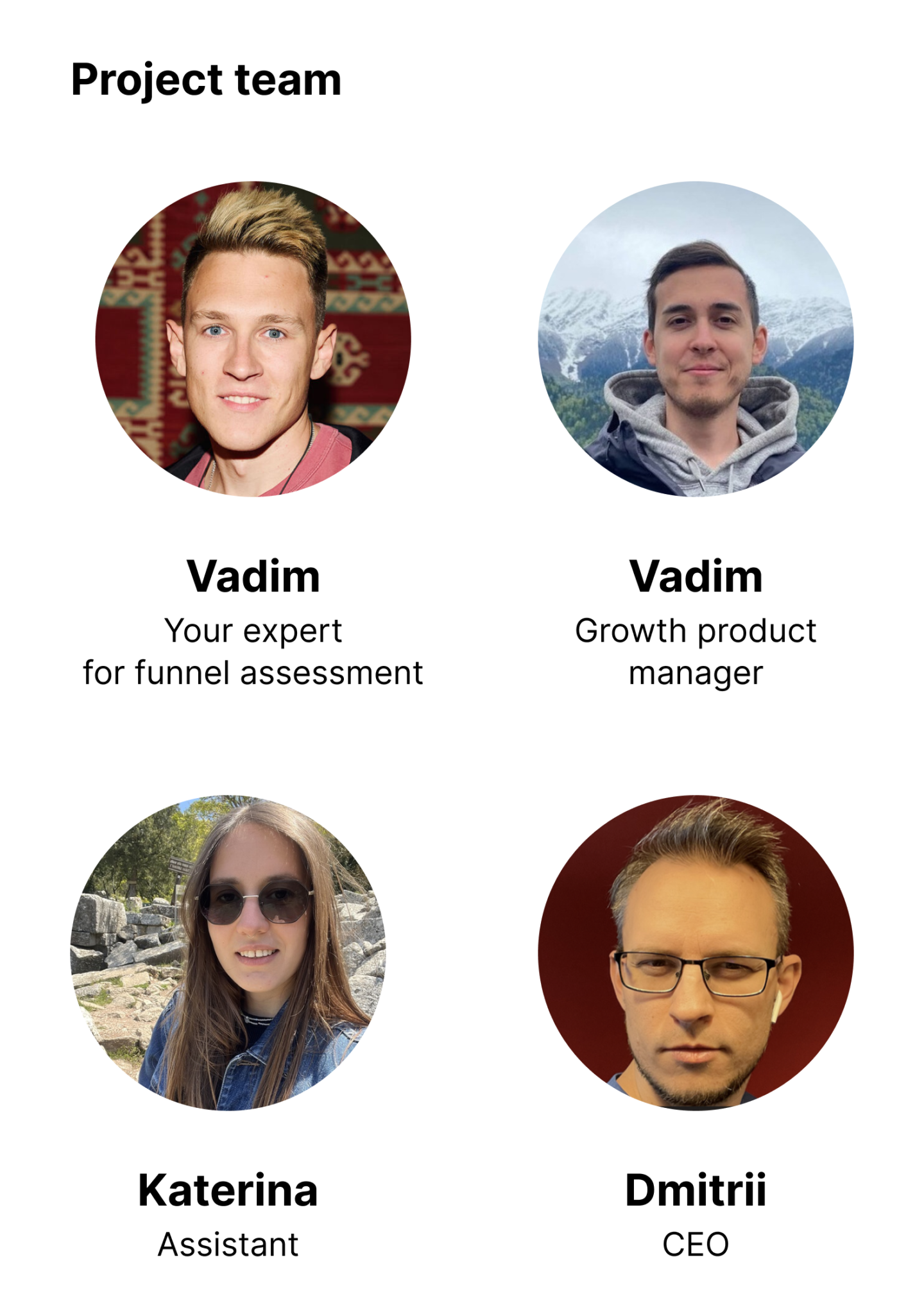
7 marketing technology tools to capture visitors and convert them into leads
Attracting meaningful traffic to your website is a tough nut to crack. To sell something is much more difficult. The average Conversion Rate varies by industry but does not exceed 9,3%. Wanna achieve it?
There are basic features in a marketing stack for that:
- pop-ups,
- web forms,
- chatbot,
- live chat,
- triggered email campaigns,
- push notifications.
Each will work only if you use them to personalize their workflow according to the customers’ interests and behavior. To choose precisely the right moment, the marketing manager needs website visitors tracking. That marketing technology feature will help you collect information on customers’ behavior on the site and their interests.
Mid-size or enterprise businesses rarely use a standalone solution for each task, like a service for creating chatbots only. Most often, these are marketing automation platforms that combine all of the above tools.
So, here are the seven most popular platforms 👇
Dashly conversational platform tools for lead generation and customer service
Dashly platform is created to drive the conversion of your marketing communications with customers. It provides a list of solutions for your marketing and sales experts to automate customer communication and grow website conversions with highly personalized campaigns.
Here is a list of tools that helped Dashly users 3X leads or get +25% sign-ups:
- chatbot and pop-ups for lead generation and qualification,
- AI SDR for lead scoring and nurturing,
- triggered emails,
- live chat,
- website visitors behavior tracking,
- A/B tests.
- Visual builder;
- 30+ integrations with your fav tools;
- Ready-made templates;
- 24/7 support.
In a lovely Q&A conversation, the Dashly AI bot gathers customers’ data and qualifies them. Based on the collected answers, it scores leads and predicts their buying potential.
All the lead data you can capture with the above-mentioned tools will be combined with info about their behavior on a website and support requests history in a lead card and your CRM.
Thus, you understand who your customer is and can send that lead to the sales department CRM automatically.
Dashly use cases are not limited to the marketing only. Its tools are excellent for sales and support as well. Moreover, thanks to easy integration with your CRM, social media, messengers, etc. all of them can work in sync.
Price: $39/month
There is a 7-day trial and a no-payment plan to test how the platform works. After that, you can switch to one of three plans:
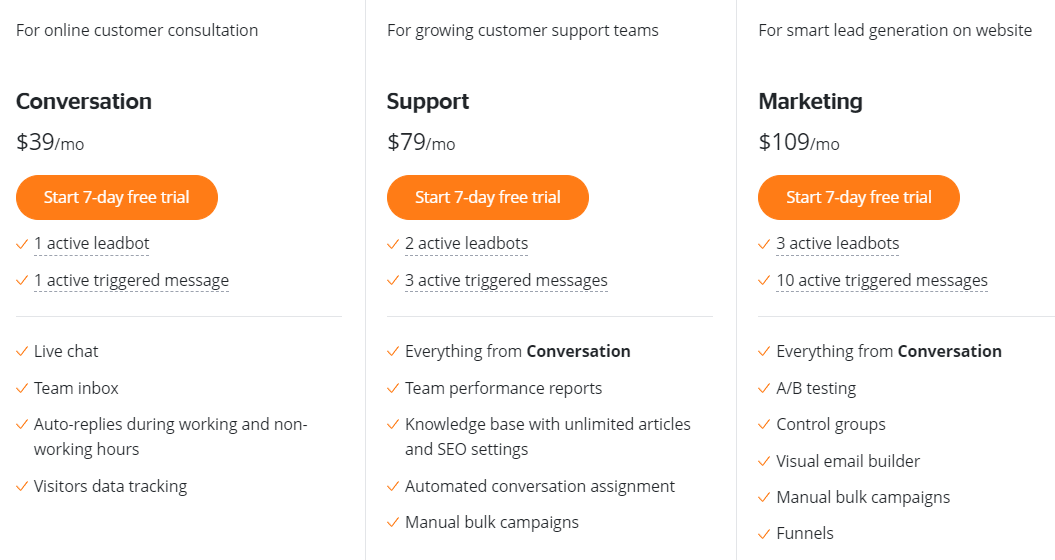
However, if you want to make Dashly a valuable part of your martech stack, consider the Marketing plan. Here, you get the most advanced analytics and the most significant number of chatbots and triggered messages. Besides, you can extend the limit with add-ons. Check out the list of add-ons and calculate the price for the platform on the pricing page.
The number of agent seats is unlimited on any plan, so you won’t be overcharged while your team grows.
The price depends on the monthly traffic to your website and the add-ons you choose to include in your plan. Thus, returning to our example of a mid-size company with 200K traffic, Dashly will cost it $999/mo.
The Clearbit Data Activation Platform
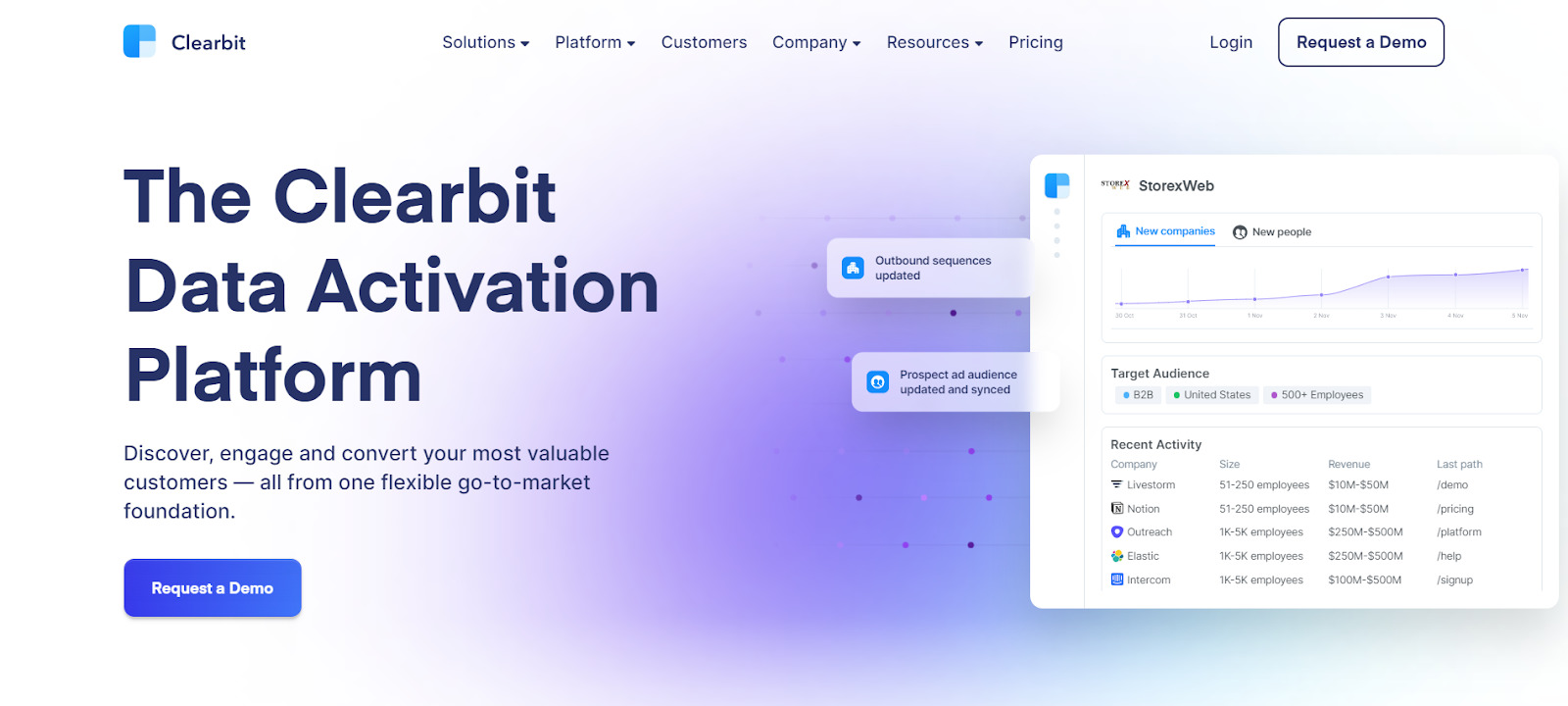
So you have traffic on the website. How to know who these people are if they don’t leave you their contacts? Clearbit knows. Based on website visitors’ IP, the service will tell you their location, company, industry, tech they use, etc.
If they leave their data, for example, email, you can find out the name, role in the company, number of employees. With this data, you can personalize your communications.
Bonus: If your target audience is eCom companies, try Dashly in tandem with Clearbit. When someone from eCom visits your website, they’ll be welcomed by a personalized chat message. Mind that it won’t show up for other users.
Price: The Clearbit Prospector service plan starts at $999 per month and is billed annually.
Alternative: Dashly, LinkedIn Sales Navigator, ZoomInfo.
Marketing automation with Marketo
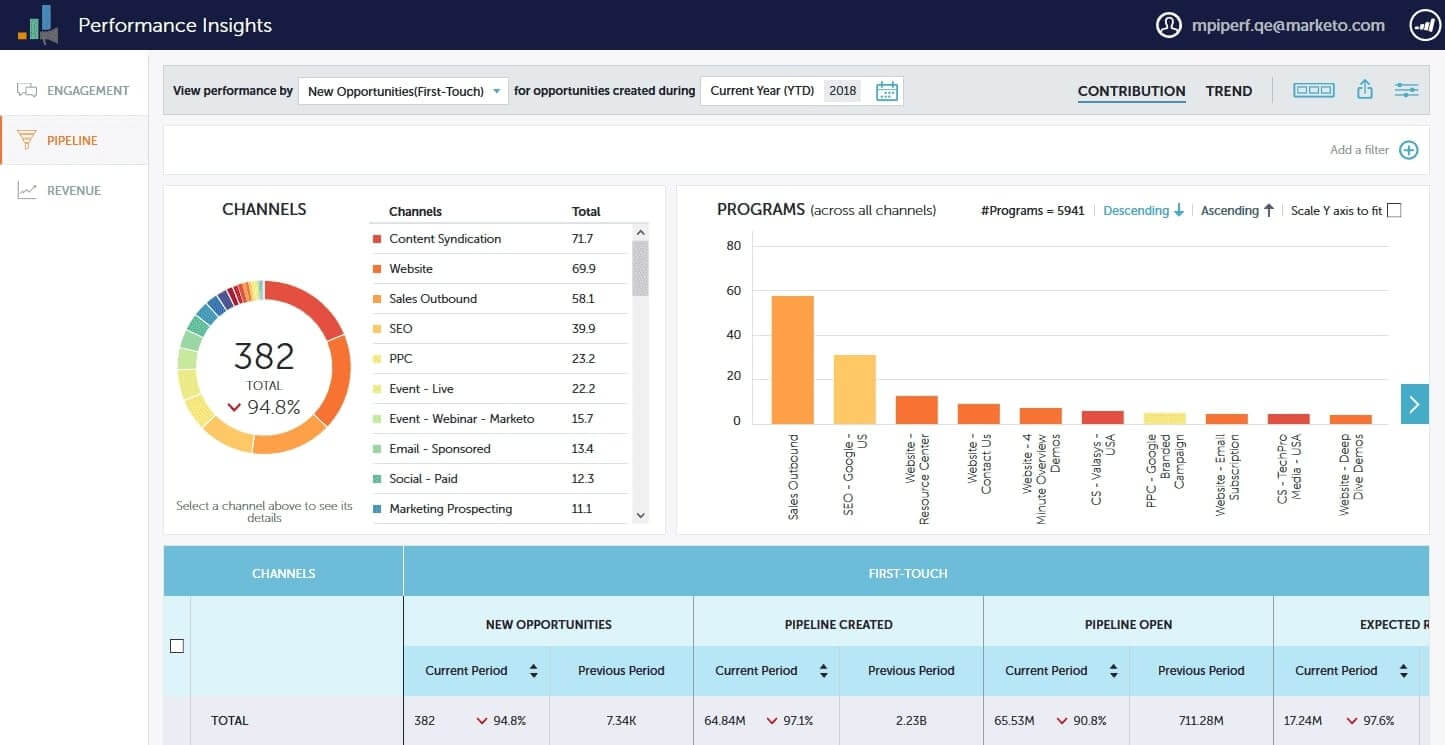
Accused of being old-fashioned, this guy takes second place on the list of the most popular product in B2B stacks in 2021 (just behind Google Analytics).
Why it’s useful
Marketo offers full-fledged features for email, mobile marketing, lead generation, A/B tests, personalization for landing pages customization, etc. Personalize your marketing automatization with top prospects segmentation.
If you’re looking to grow and a large audience market — Marketo is your tech stack choice.
Price
$960+ per month. The biggest package includes website retargeting, target account management, website personalization, predictive content, predictive audiences, and advanced journey analytics.
Alternative: Dashly, Eloqua, Pardot, Zoho CRM.
Outreach for sales engagement
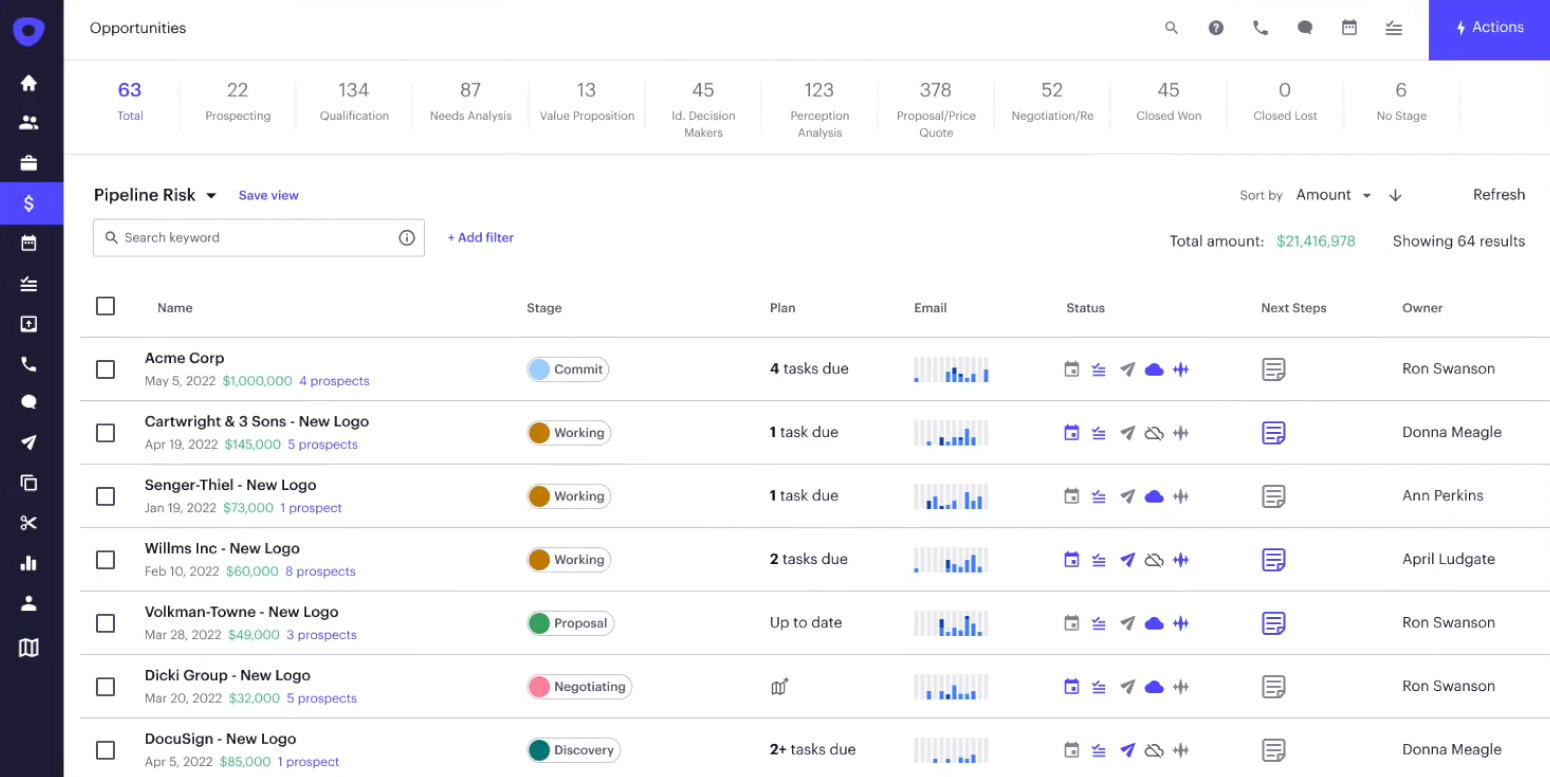
There is a thing everybody loves in marketing — they are great at lead generation and nurturing. But it’s often a downside — handing those leads over to sales. Marketers lack information about whether those leads became clients or not. That’s what Outreach is here for.
Why it’s useful: If you’re about severe sales and marketing management and alignment, this tool is a must-have for your martech stack. Both marketing and sales are welcome to use Outreach to track leads. Imagine you’ve got a promising lead from the webinar. You gave it to sales, and the next day entering the service, watched their enriched data, communication channel, and… ta-dah! — first payment. Great, isn’t it?
Price: $100 per month/user
Alternative: SalesLoft, Groove, Dashly.
All-in-one marketing software HubSpot
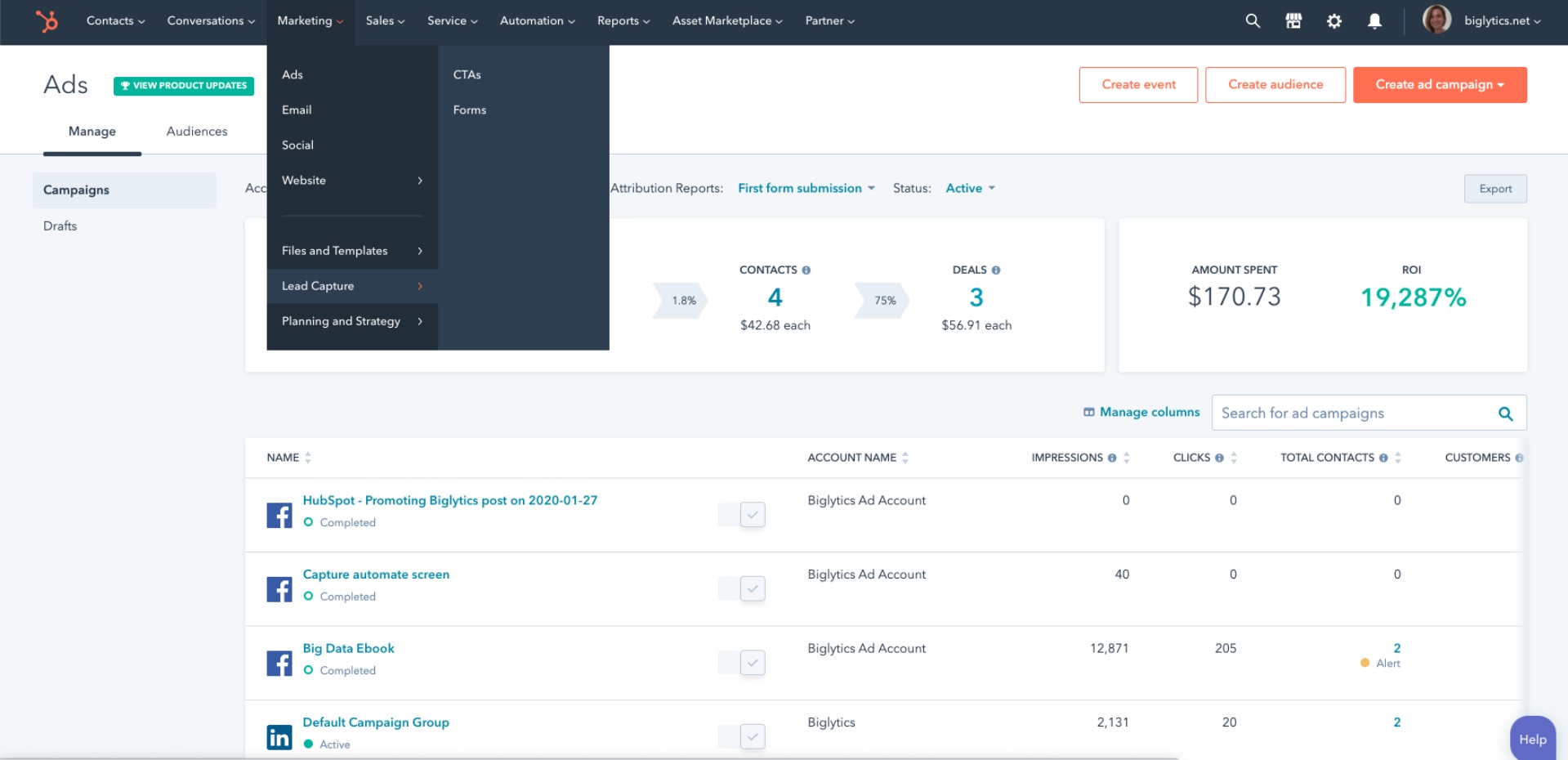
HubSpot is a veteran of the martech stack front for businesses of all sizes. It can do everything: the service is a Marketing Hub, Sales Hub, Service Hub, and CMS Hub. But which offers are specifically designed to engage the leads?
Why it’s useful: HubSpot is an all-in-one CRM platform with support, Marketing, and Sales tools. You’ll find everything to automate your business processes. The biggest advantage is that all the tools are under one roof. So if you’d like to use support features and marketing or sales, it would be easy to start doing it.
Price: $890 monthly. It includes tools for managing social media, A/B testing, custom reporting, and website traffic analytics.
The forever-free limited version is available.
Alternative: Pipedrive, Hoovers, Dashly.
ActiveCampaign tools for excellent customer experience
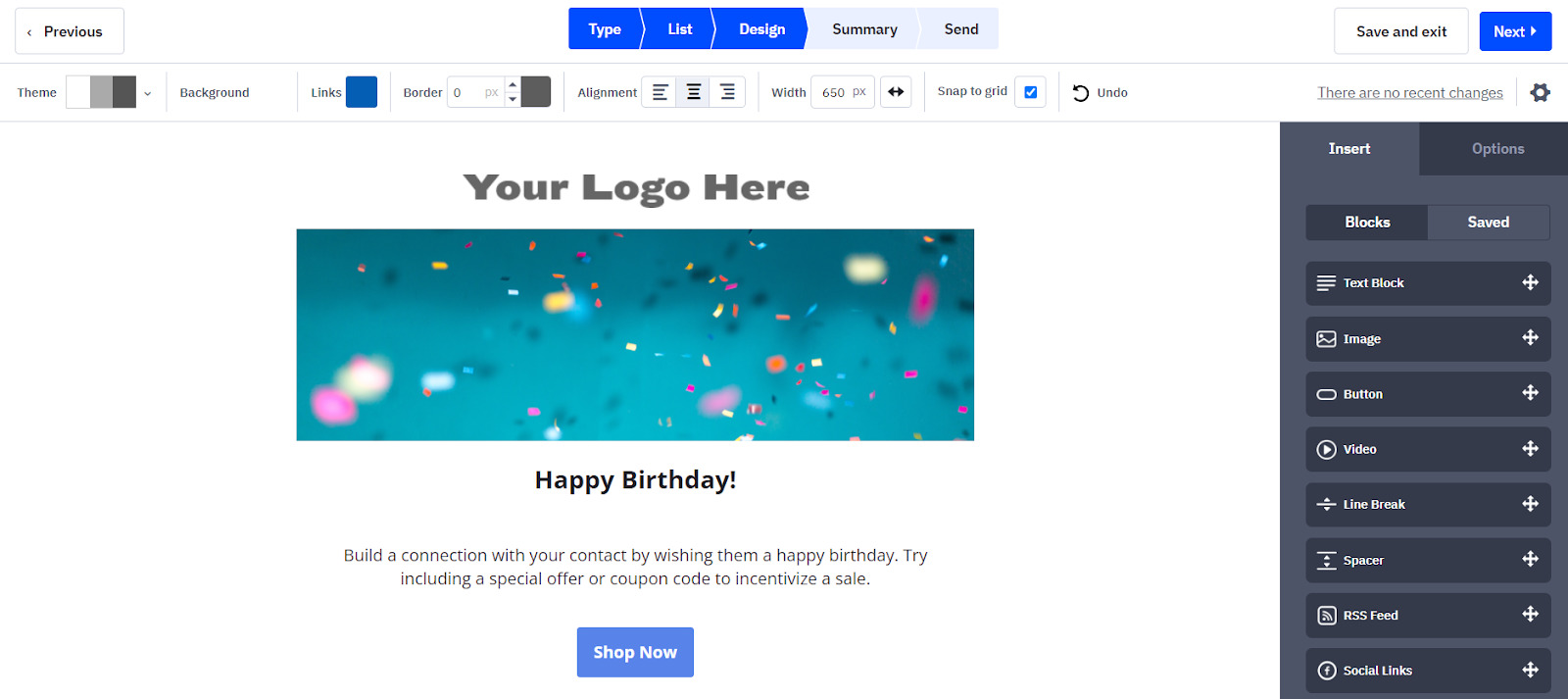
The site of ActiveCampaign has a convenient sorting of features, which helps you choose a suitable plan. It is sorted by need (B2B, B2C, and eCommerce,) by product (email marketing, sales engagement, marketing automation, etc.,) and by industry (technology, education, healthcare, fitness & nutrition, etc.)
Why it’s useful: With ActiveCampaign, you can track users’ behaviors, engagement, and interest in the content you send. Your sales rep will be able to chat with each prospect about what really matters, and not waste anyone’s time.
The tool can be integrated with 880+ leading customers engagement solutions, for example, Shopify, WooCommerce, Salesforce, etc. There’s a search for an app.
Price: The professional $187/month (1000 contacts) plan includes conversion reporting, sales engagement automation, predictive sending & predictive content, and 50 agent seats.
7-day trial is available.
Alternative: Dashly, SendGrid, Mailchimp, SendX, Sendinblue, Campaign Monitor, SharpSpring, Keap, Freshsales.
Zendesk customer engagement platform
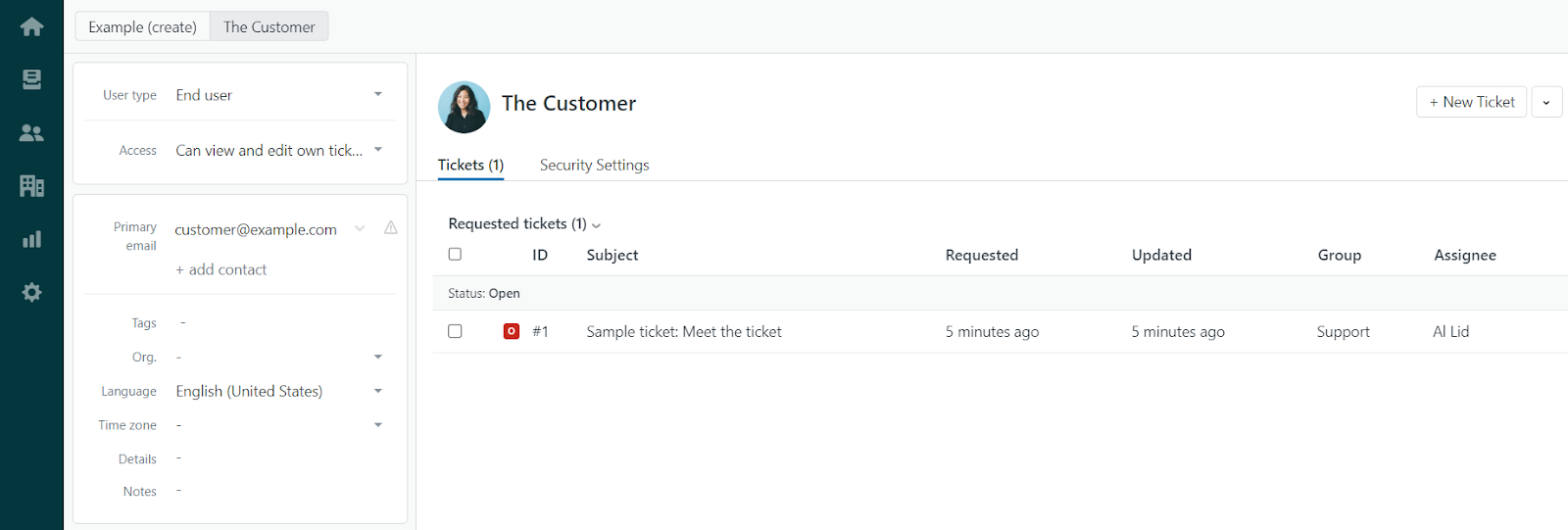
Zendesk is good for both enterprises and startups. It can be used in EdTech, SaaS, healthcare, manufacturing, etc.
Its Al-chatbot will unload your support, freeing it up from routine. There is an opportunity to put Answer Bot on email, messengers, live chat, and more. Zendesk has a lot of chart types for reporting. Another advantage of popularity is integrations: Zoom, Facebook, Instagram, WhatsApp, and 1000+ services.
Price: $99 per month for a professional plan. It includes conversation routing based on agent skill, advanced voice capabilities, info location options, and an events connector for Amazon Web Services.
The trial is available for a month.
7 marketing technology tools to analyze campaigns performance
Last, but not least. 26% of CMOs placed marketing data and analytics as a top three capability gap.
Analytics tools are an important part of the stack. That’s a fact. If previously marketers ask whether a company can afford to invest in analytics tools, now it’s about whether you can afford not to invest.
Leaders are effectively deploying modern data and analytics pipelines that turn raw data into enterprise-ready intelligence that drives decisions.
But still, there’s a problem with post-factum solutions, but not during the real-time tracking of all the marketing efforts. So, the first thing you need is a handful of tools for your marketing tech stack that’ll give you a 360-degree view of the company’s progress. And here are the best of them.
Provide marketing statistics with Google Analytics
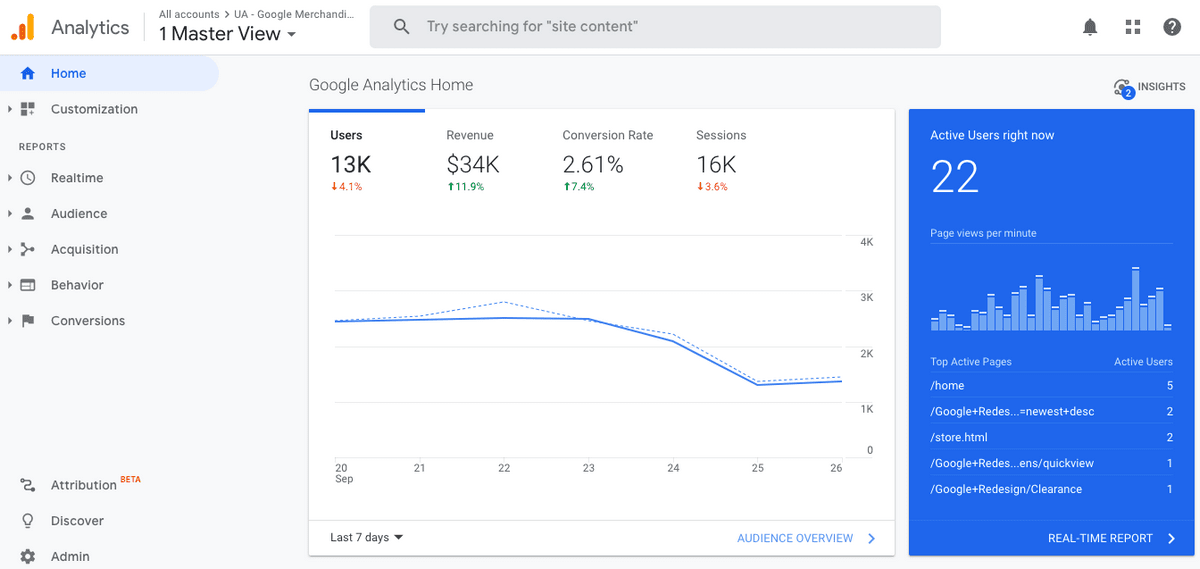
One start of this martech stack — GA has over 73 million fans all over the world.
This tool can easily mess with your head with various menu options, date ranges, and filters. GA has not the prettiest face, making its UX confusing. But it didn’t prevent Google Analytics from being number one among similar services.
With its help, you’ll know the source of your traffic (social media, SEO, etc.), whether website users like your content (bounce rate) and what content they prefer (page success rating?)
With this data, marketers can enrich their buyer persona profiles and update their marketing strategy.
Bonus: Upgrade your marketing efforts to the next stage with knowledge of how website visitors interact with your chat, email, and pop-ups. Just integrate GA with Dashly and track your customer’s journey on the website.
Price: free
Alternative: Mixpanel, Firebase.
Check marketing campaign performance with LeanData
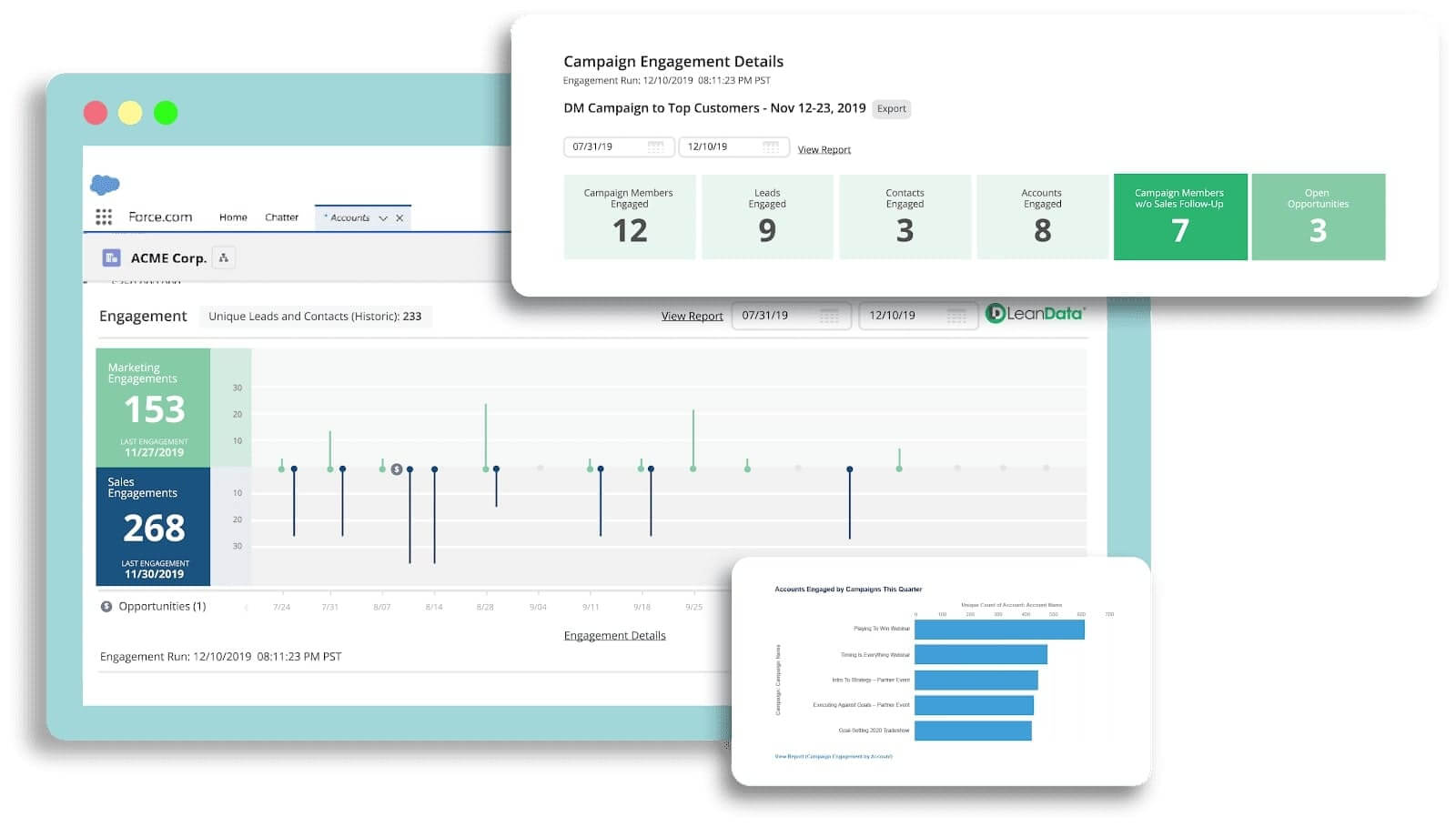
The marketing conversion race has a winding road of digital loops and surprising twists, between which you must make in-time strategy maneuvers. Moreover, you should know what exact moves lead your marketing to champagne.
Otherwise, forget about real ROI and continue investing in underperforming marketing channels.
Why it’s useful: LeanData collects data from all your platforms and CRM software to understand which brings more leads. With high customization of the attribution models according to the business-specific, you can get more clear and specific info about your customer’s digital journey.
Price: $7 995 per year.
Alternative: BrightFunnel, Bizible.
Testing with Optimizely
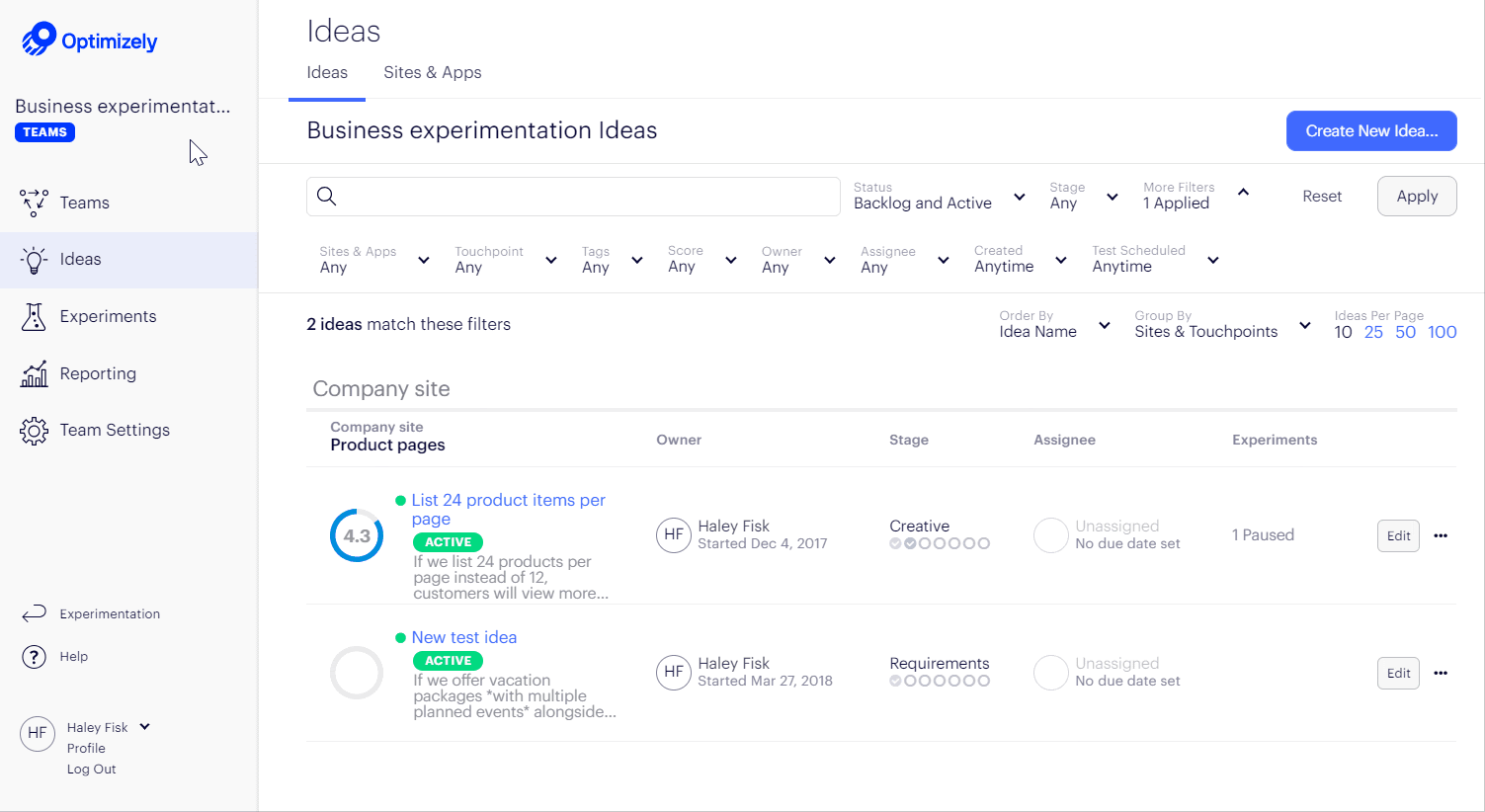
Let’s meet a Leader in the 2022 Gartner Magic Quadrant for Digital Experience Platforms!
Why it’s useful: Optimizely is an easy-to-use platform for marketing experiments. Your team can test value proposition, and website design to improve UX, focus marketing efforts, and positioning. Create variants of your website, do A/B tests, and track conversions with no code. It’s the perfect solution for companies that don’t have an army of developers, because you can create a website variant using a visual editor in minutes.
Price: Start-plan is forever free, Manage is $79 per user/month. For enterprises, the price on request begins at $21 000 per year. Orchestrate-plan is the most secure due to SSO + two-factor authentication. Budgeting includes invoice management.
Alternative: Instapage, Unbounce.
Data is essential, but convenient analytics is more important. At the end of the day, it’s not about the data itself, it’s about how easy you can use it. That’s why a business needs the right tools to make analytics more accessible and effective.
Check the temperature of content performance with Hotjar
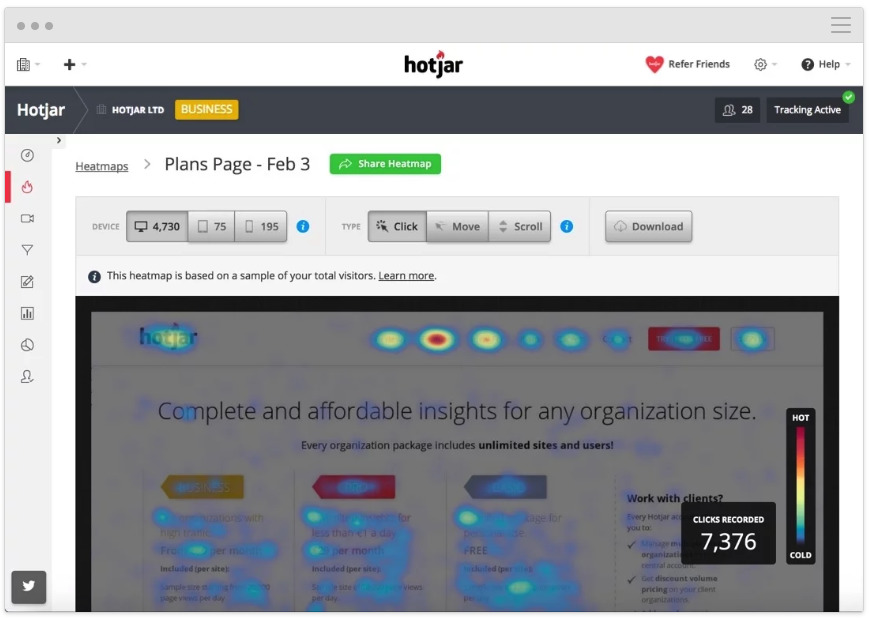
That’s a real challenge to have in a martech stack tool that collects user details and tracks their action on a website.
Why it’s useful: Hotjar is a set of features essential for analytics and user reaction (survey, recording of a screen). But the most popular is a heatmap. It provides marketers with flexible management tools: info about website visitors’ behavior like taps, scrolling, clicks, mouse movements, u-turns, and rage clicks. You can filter down to recordings of users rage-clicking and u-turning to troubleshoot.
Great tool for blog articles, landing page copy, and design performance analysis. Hotjar is a useful martech stack for product managers, designers, and researchers.
Price: €295 per month. The business plan includes 500+ sessions per day, tracking custom user attributes, 3000+ integrations, API identification.
A limited version, permanently chargeless, is available.
Alternative: Crazy Egg, FullStory, Dashly website visitors tracking.
Segment customer data management
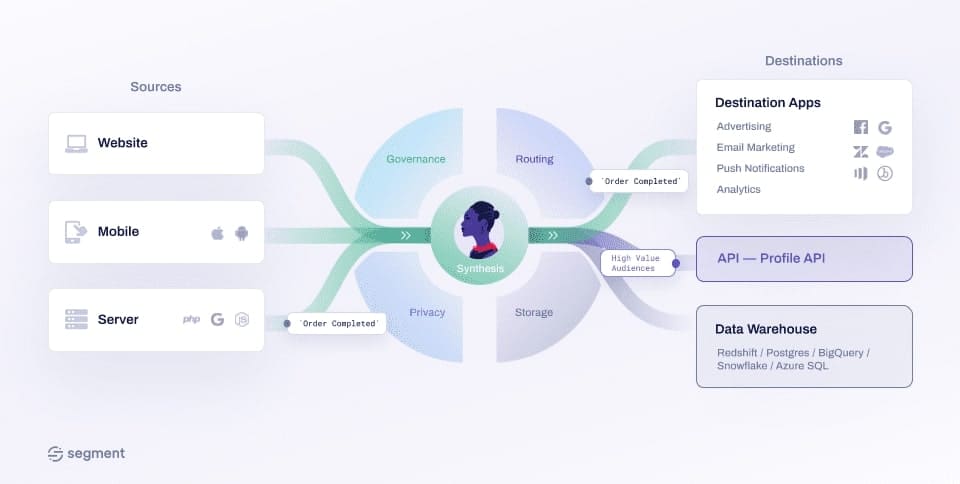
We’ve already talked about data collection. From email, and website visitors. But that were separate tools: GA, Dashly, Facebook, etc. What about the idea to collect all the info from these resources in one place automatically?
Think of it as a data hub for your entire company. As companies use a broader arsenal of marketing and analytics products, consolidation tools like Segment are only going to become more and more popular.
Why it’s useful: Segment is your data hub. It collects user data from your CRM, website, applications, etc., and presents it in a form of a single view of the customer. That’s a nice solution for both startups and enterprises.
Price: $120+ per month. Plan for teams includes 10 000 visitors, collecting customer details from unlimited sources, and sending to unlimited destinations.
A chargeless plan and 14-day trial are available.
In addition, Segment has a special offer for startups. It includes $25 000 in Segment credits and $1M in complimentary software from partners: Amplitude, Intercom, etc.
Alternative: mParticle, Tealium, Datadog, Bloomreach, Snowplow Analytics.
Tableau, marketing solution for data analysis
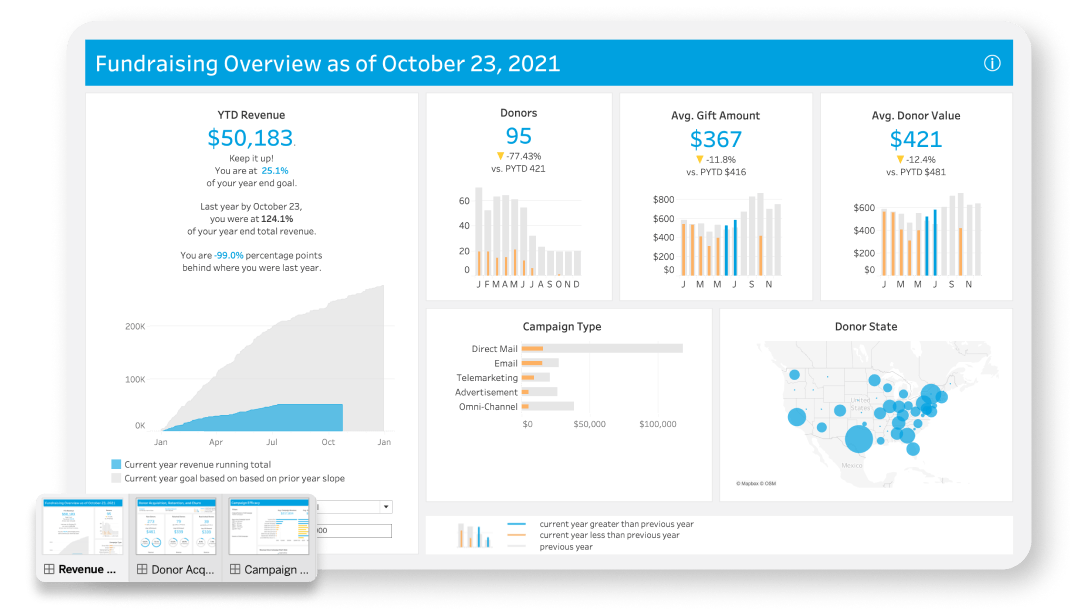
The cream of the crop of your marketing tech stack that makes your input easy to understand. I mean all the data you have. For example, Halloween is coming. The time of great marketing campaigns. So, you launch PPC, Facebook Ads, auto funnel chat on the website, and pop-ups. To analyze their results usually, you’d use different accounts and tools.
Business Intelligence services collect and aggregate the information from all these sources + CRM in one place. So you have a clear vision and easy management of your marketing campaign results.
Business intelligence is a set of tools and practices for data mining, visualization, and business analytics for data-driven decisions.
Why it’s useful: Tableau is the best and the most popular BI tool among martech stacks. It helps to visualize data of any complexity without the coding skills needed. Intuitive and powerful. Best for data scientists.
Price: $70 per month for Tableau Creator. It allows you to combine, shape, and clean your data faster, visualize and analyze that. You can work with bases without writing code and reduce time spent on data preparation. A trial version is available.
Alternative: Looker, Microsoft BI.
The leading digital insights platform Heap
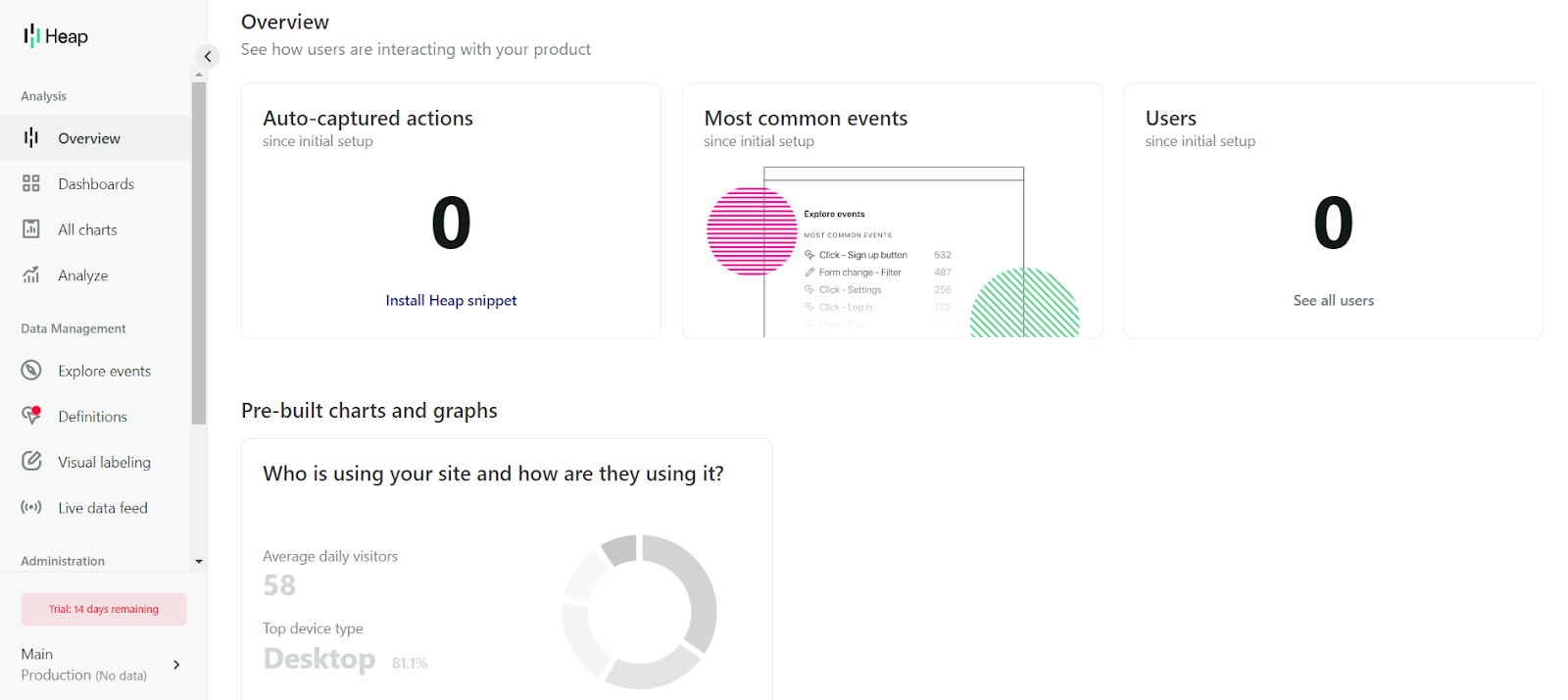
Heap combines quantitative and qualitative analytics for a 360-degree view of your customer journey.
Why it’s useful: Autocapture collects all the info on your customers: what they click, where they go and what they do on the site. Effort analysis automatically shows which parts of your site are giving users the most trouble and why. The option for determining user friction is unique among the spectrum of the stack.
Data is fully democratized and accessible with minimal engineering and administrative work.
With Heap you can build a better digital experience, measure success for tangible ROI, and work without code process to manage the lifecycle of a dataset as product changes.
Price: $375 per month for Growth. The Pro plan includes unlimited connections to enrichment sources, three projects, two-factor authentication, and custom onboarding & Implementation. 14 days trial is available.
Alternative: Dashly, Smartlook, Pendo, Amplitude Analytics.
Want to get a $0 marketing audit?
Let’s schedule a 30-minute call and find out how to:
- Improve your website conversion.
- Grow your ROI/ROMI with proven hypotheses that fit your audience.
- Optimize or launch ad without additional budget.
- Decrease SLA workload by saving their time on lead processing.

The price of your ideal marketing technology tools stack
To be precise, let’s count the martech stack cost based on the example of a company we mentioned at this article’s beginning. Mind you, it’s a mid-size B2B SaaS company that has about
100
employees
200K
traffic
$300 average
check
There are 15 marketing experts working on SEO, SMM, messenger, affiliate marketing, YouTube, PPC, different kinds of triggered messages on a website (marketing automation), emails, etc.
All these features are a must for a tools plan choice. It defines the price of the entire marketing tech stack.
| Marketing channel | Prior martech stack’s solution | Price | Martech stack alternatives | Price |
| PPC | Google Ads Facebook Ads Manager YouTube Ads | Free Free Free | AdRoll | $350/mo |
| Landing pages builder | Unbounce | $225/mo | Leadpages | $99/mo |
| CMS | HubSpot | $400/mo | Wix Joomla! WordPress | $35/mo $29+/mo free |
| SEO | Ahrefs ScreamingFrog | $399/mo $209/year | Serpstat Se Ranking | $299/mo $72/mo |
| Marketing automation | Dashly | $999/mo | Marketo Zendesk | $960+/mo $1500/mo |
| SMM | Hootsuite | $179/mo | SproutSocial SocialPilot Buffer | $89+/mo $26+/mo $48/mo |
| Webinars | Zoom | $340/mo | Google Meet | $18+/mo |
| Content Marketing | Buzzsumo | $299/mo | ||
| Grammarly | $15/mo | |||
| YouTube | Tube Ranker keyword collector | $49/mo | ||
| Adobe Creative Cloud for video editing | $55/mo | Movavi Video Editor | $19/forever | |
| Analytics | Mixpanel | $25/mo | Optimizely Google Analytics | $79/month Free |
| Hotjar heatmaps | $295/mo | |||
| Total | $3261/mo | $1797/mo |
Thanks! Now check your inbox

The magic wand for your business
When we were children, some of us dreamed of having a magic wand. I also believed it would solve all of my problems. And you know, nothing changes. Children grow up, go into marketing, and still dream about that magic wand.
Of course, it has been a bit transformed. And now this dream turned into an all-in-one solution to fit all marketing needs. But for now, it’s still a dream.
No matter how full-fledged the marketing platform is, it hardly solves all the tasks of marketing, sales, and support equally well. Something will suffer, for example, SEO, ads, SMM, landings, and your budget. So the solution is a martech stack: collect ultimately connected tools for each of your business needs.
The secret is to choose the tool that covers not one, but several tasks. Like Dashly that serves lead generation and nurturing goals for marketing, sales, and support.
One tool to streamline 80% of your workflow. Isn’t it magic?
Hit your MQL quota by increasing website conversion rate with a free audit from Dashly experts
Let’s schedule a 30-minute call and find out how to:
🌟 Improve your website conversion.
🌟 Optimize or launch ad channels without additional budget.
🌟 Decrease SLA workload by saving their time on lead processing.

Martech stack FAQ
It’s the suite of tools and tech marketing team uses for streamlining and speeding up processes along each step of the marketing funnel: engage customers into personalized communication, capture leads, pass them to the sales team, and analyze the campaigns’ results.
Start with business goals and convert them into a strategy. Evaluate the marketing tech stack you used previously. Think about each step of how your team will reach it, and try to speed up the process with the marketing automation tech. The more connected tools you have, the better.
Usually, the marketing tech stack decision-maker is a CMO or CEO. But it also can be marketing managers who will use this service who also influence the choice.
If you hesitate about what solutions you need, Dashly expert can assess your website to help you decide.
A martech stack price varies based on tools and business needs. It can range from $500 to $10,000+ monthly. Costs depend on factors like features, integrations, and tool categories (CRM, automation, analytics, etc.).
When is it time to reevaluate the martech stack?
The start of the next OKR period (quarter) is perfect. But still, marketing technology reevaluation could be done twice a year when you plan a company’s global goals and strategy to reach them.
How to get to know the experience with a marketing tech stack?
The best option is to consult your niche’s marketing teams, experts, what tech they use, and how they choose it. For example, you can chat Dashly team on our website and schedule a conversation!
How to create the best marketing tech stack?
Define your marketing objectives (lead generation, nurturing, automation, etc.).
Assess current gaps and challenges in your marketing workflow.
Compare tools across essential categories like CRM, automation, email, analytics, and social media.
Choose tools that integrate smoothly with each other and existing platforms.
Select tools that can grow with your business needs.
Run trials to test usability and features, then implement.
Provide training to ensure proper use and adoption.
Continuously track performance and optimize based on results.
And, of course, subscribe to our marketing blog 🙂
Read also
- 3-step guide on inbound lead qualification: how to qualify inbound leads on autopilot
- Choose your ideal lead nurturing platform: Top 10 software tested by experts
- The best way to collect emails: 5 top-notch methods unveiled
- How to implement user tracking on website: guide, tactics, and tools
- Top 10 user activity monitoring tools: tracking features, price, cons and pros
- The top 15 inbound marketing tools: harness digital power and elevate your business
- Top 12 lead qualification tools to deliver your sales hot leads only
- Top 20 best website tracking tools for effective work with visitors
- Top 10 customer segmentation tools to personalize customer communications
- 10 best website personalization tools to deliver top-notch visitors experience
- 12 best AI marketing tools to automate everything [expert edition]
- Top 12 omnichannel marketing tools for your cross-channel campaigns
- Top 13 follow up email software to elevate your email marketing strategy
- 10 best predictive lead scoring software to boost your sales funnel
- 7 best email capture tools: features and pricing compared for 2024







